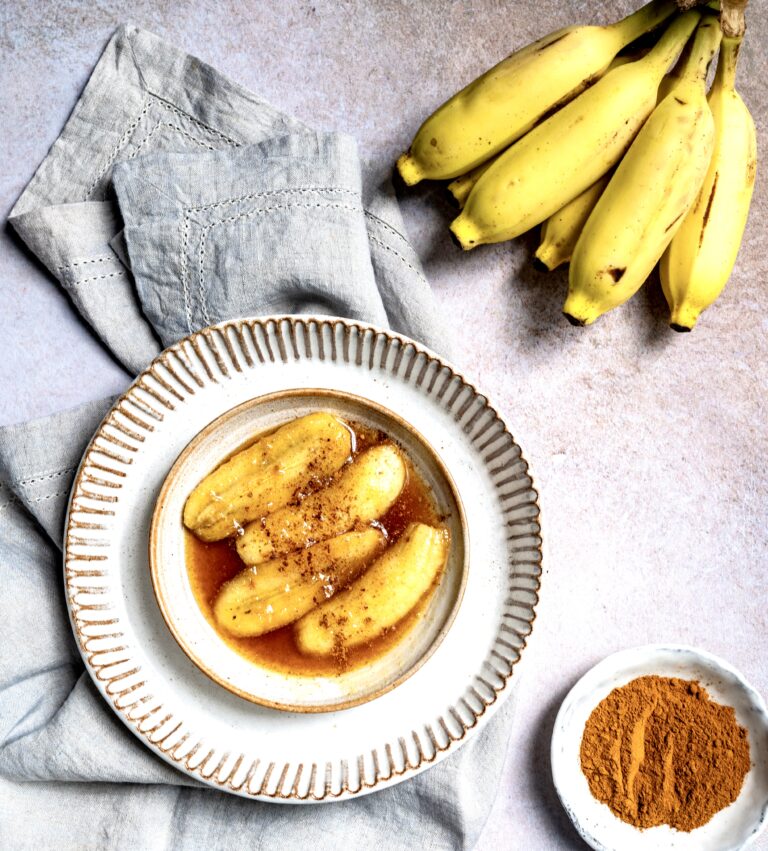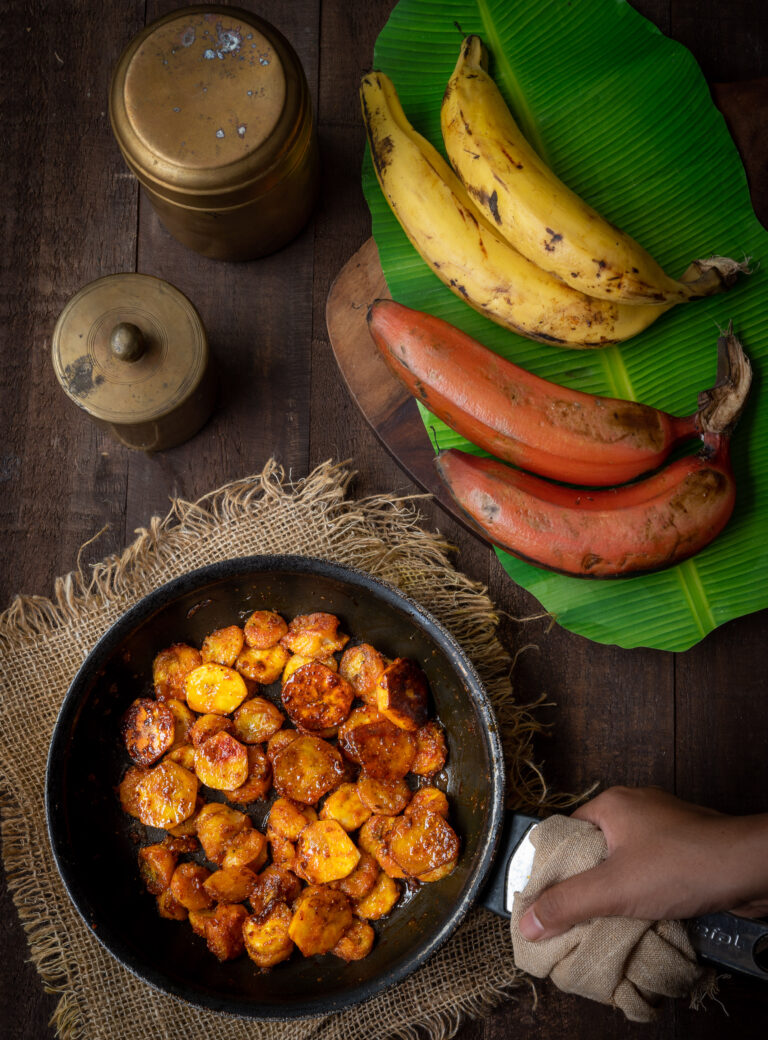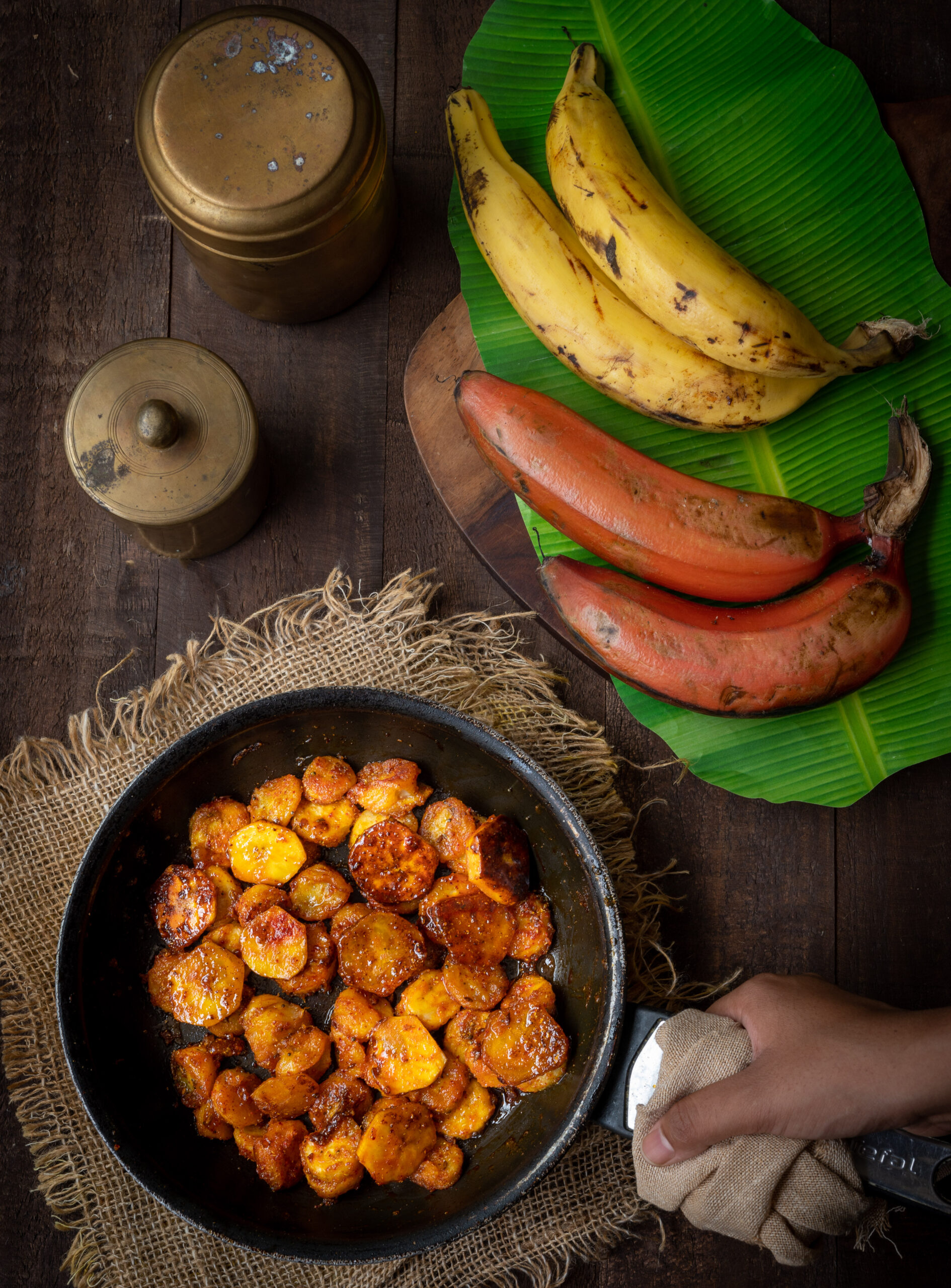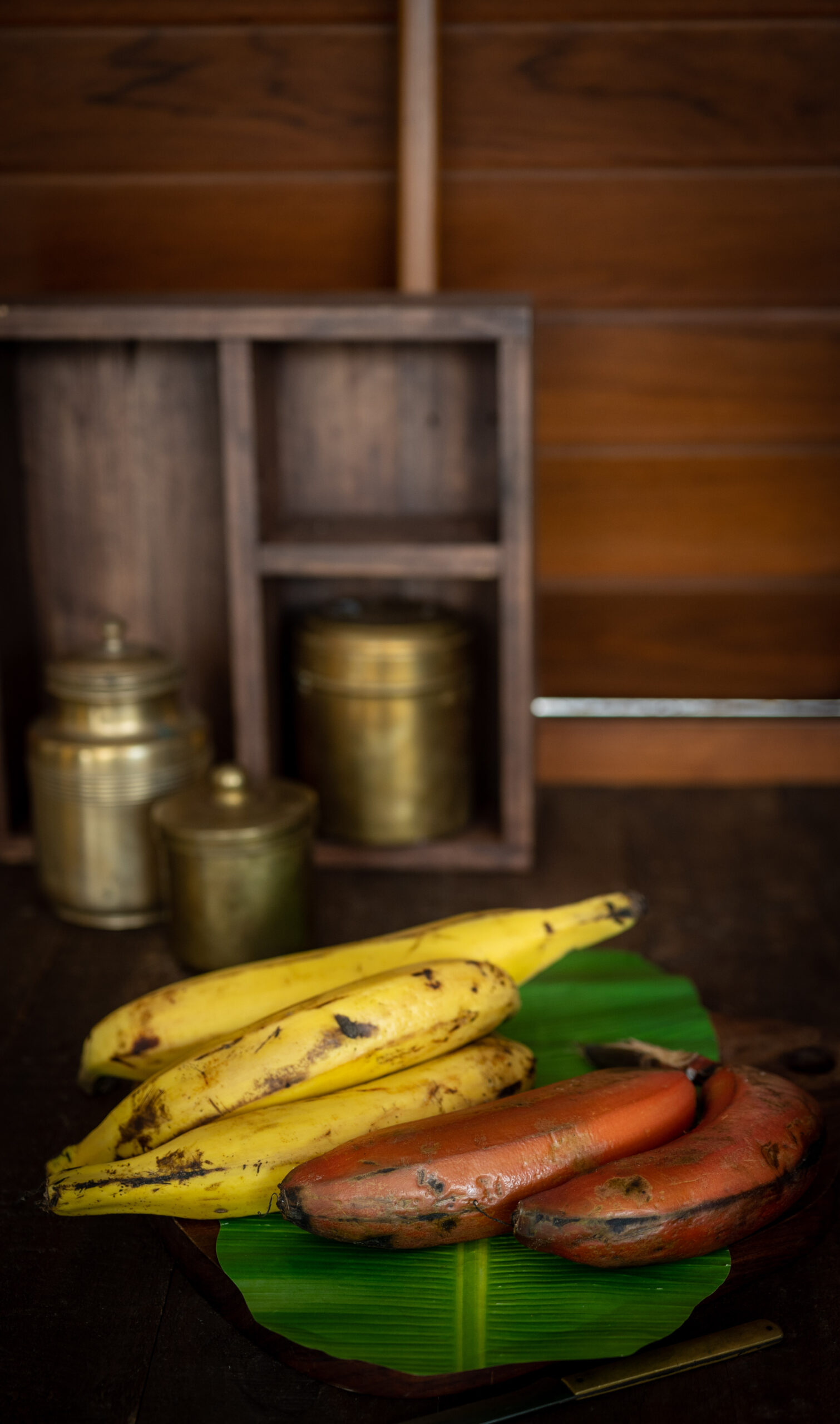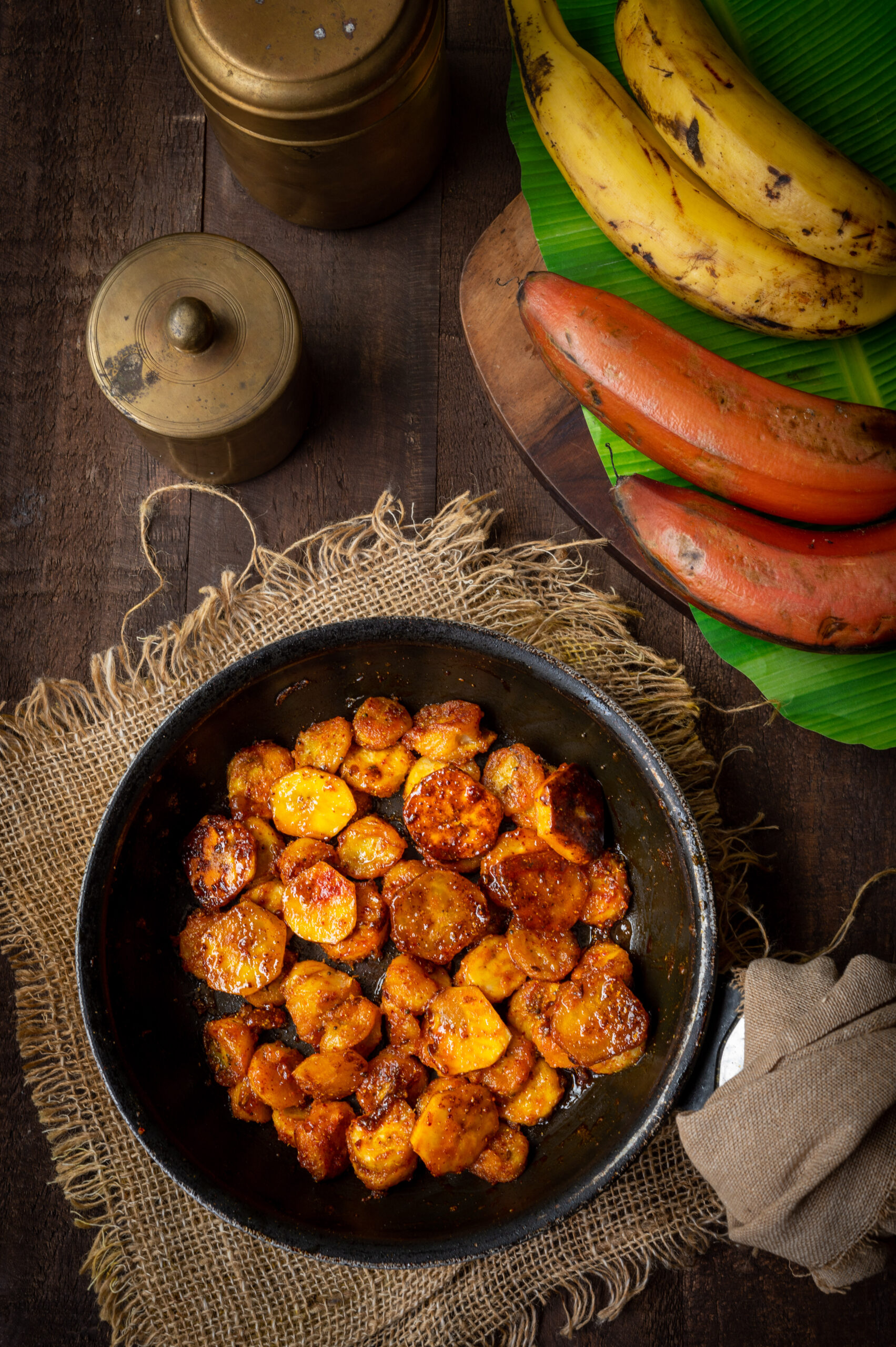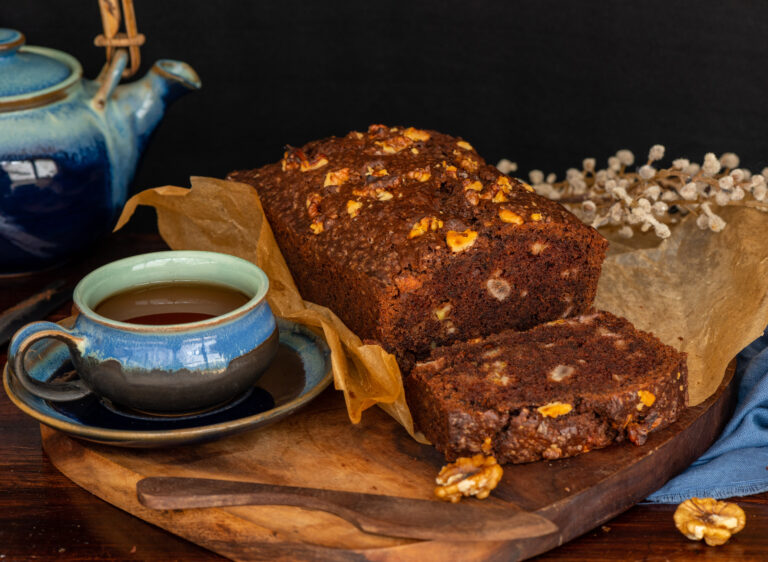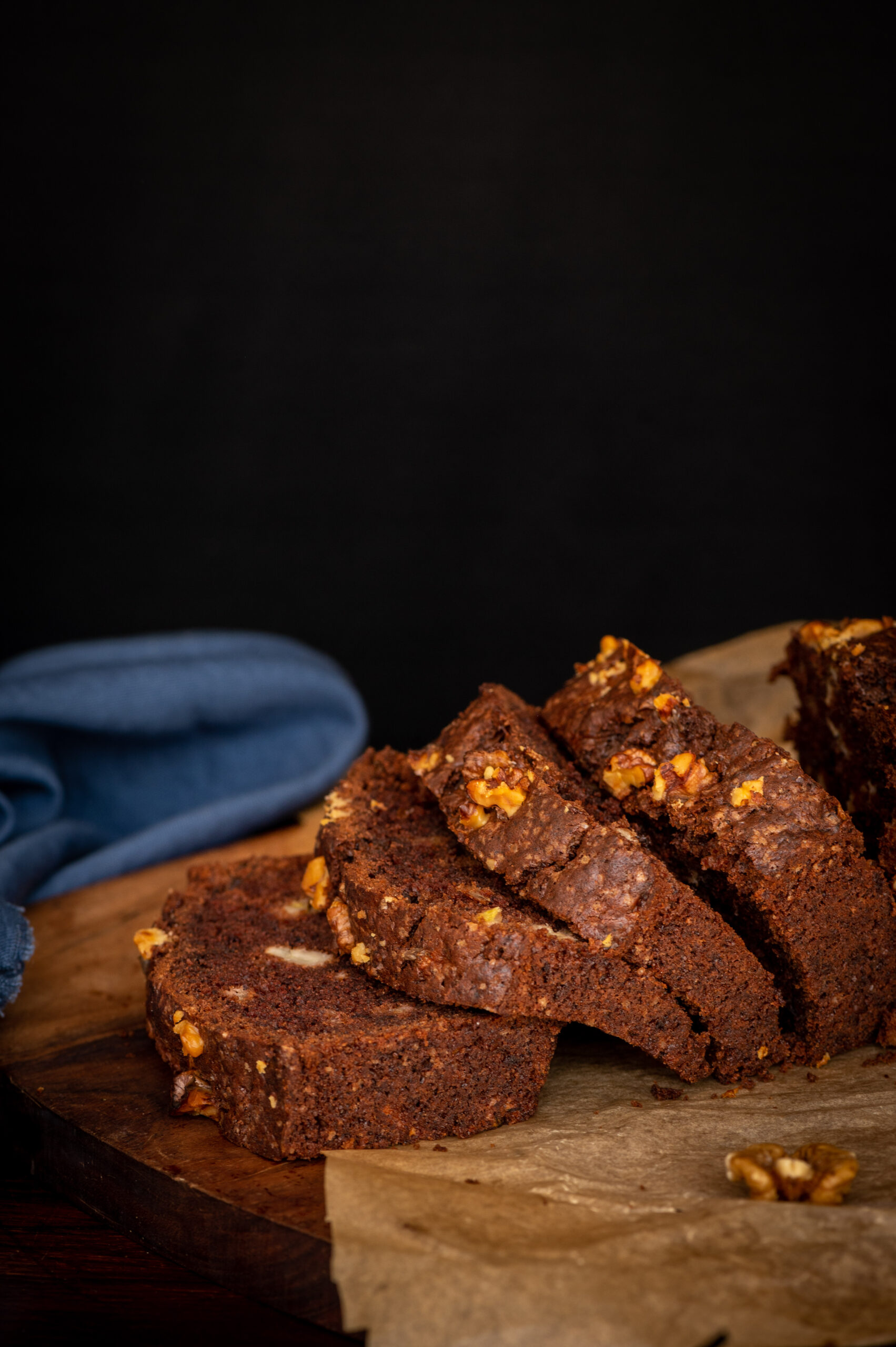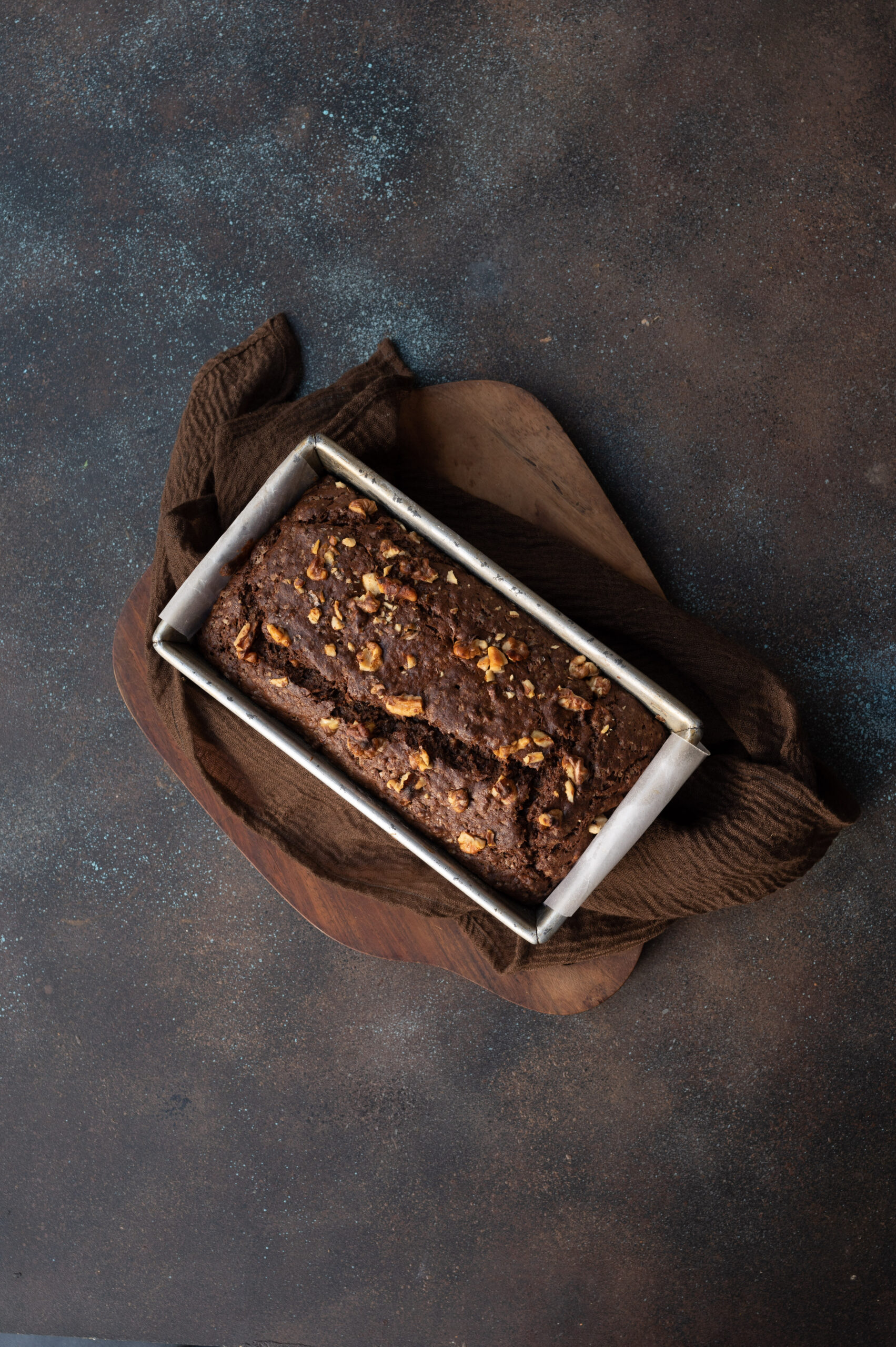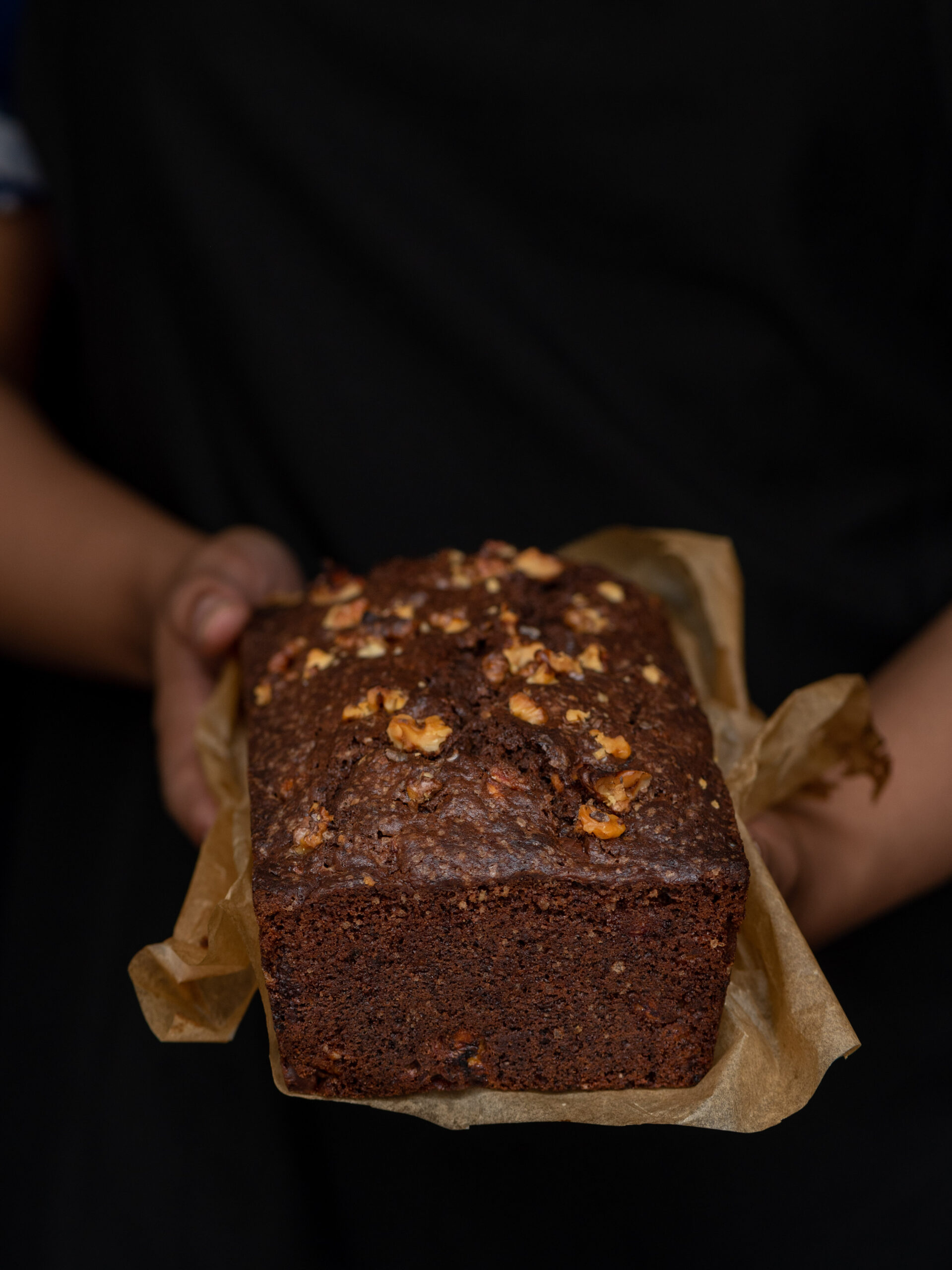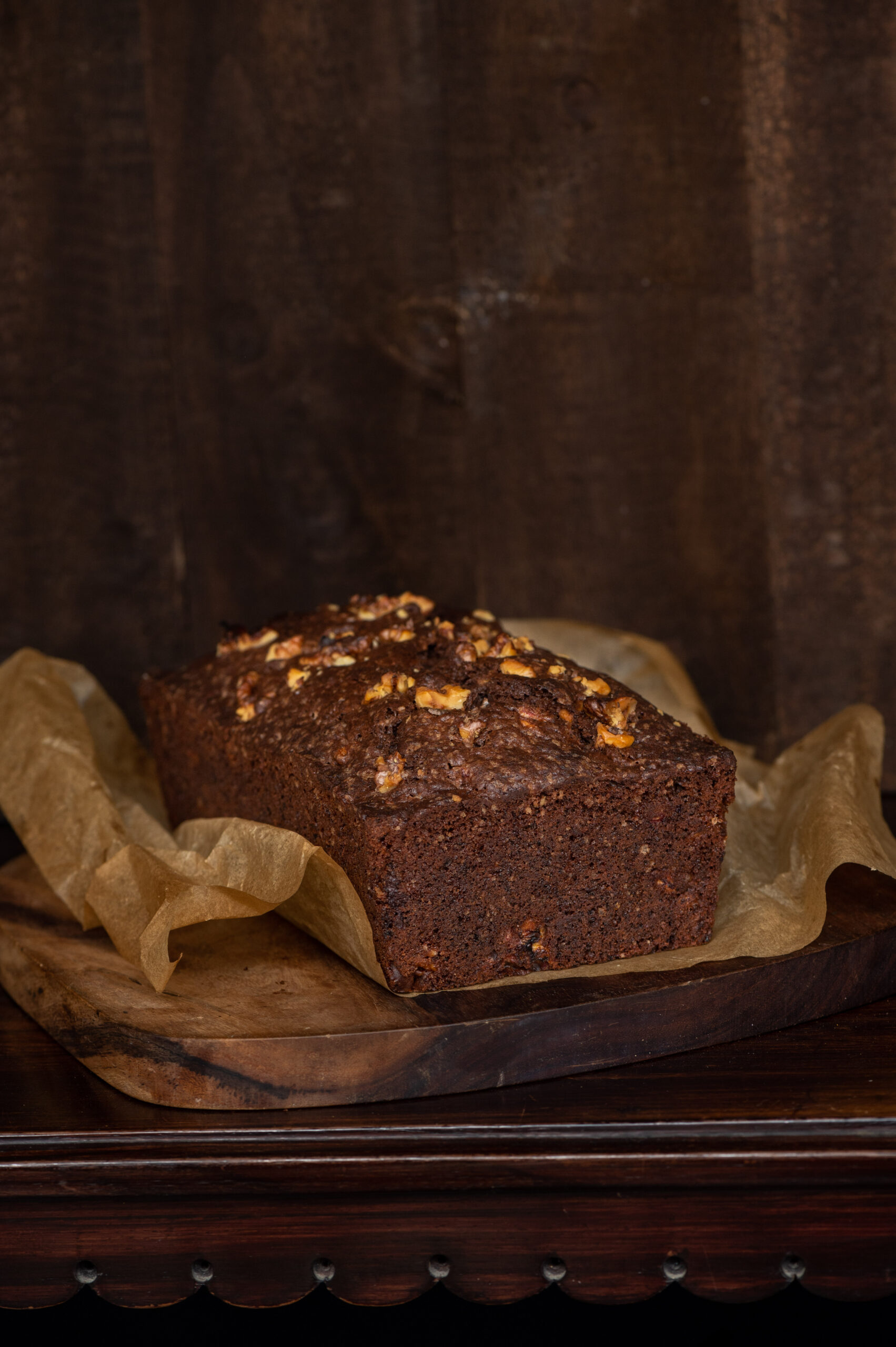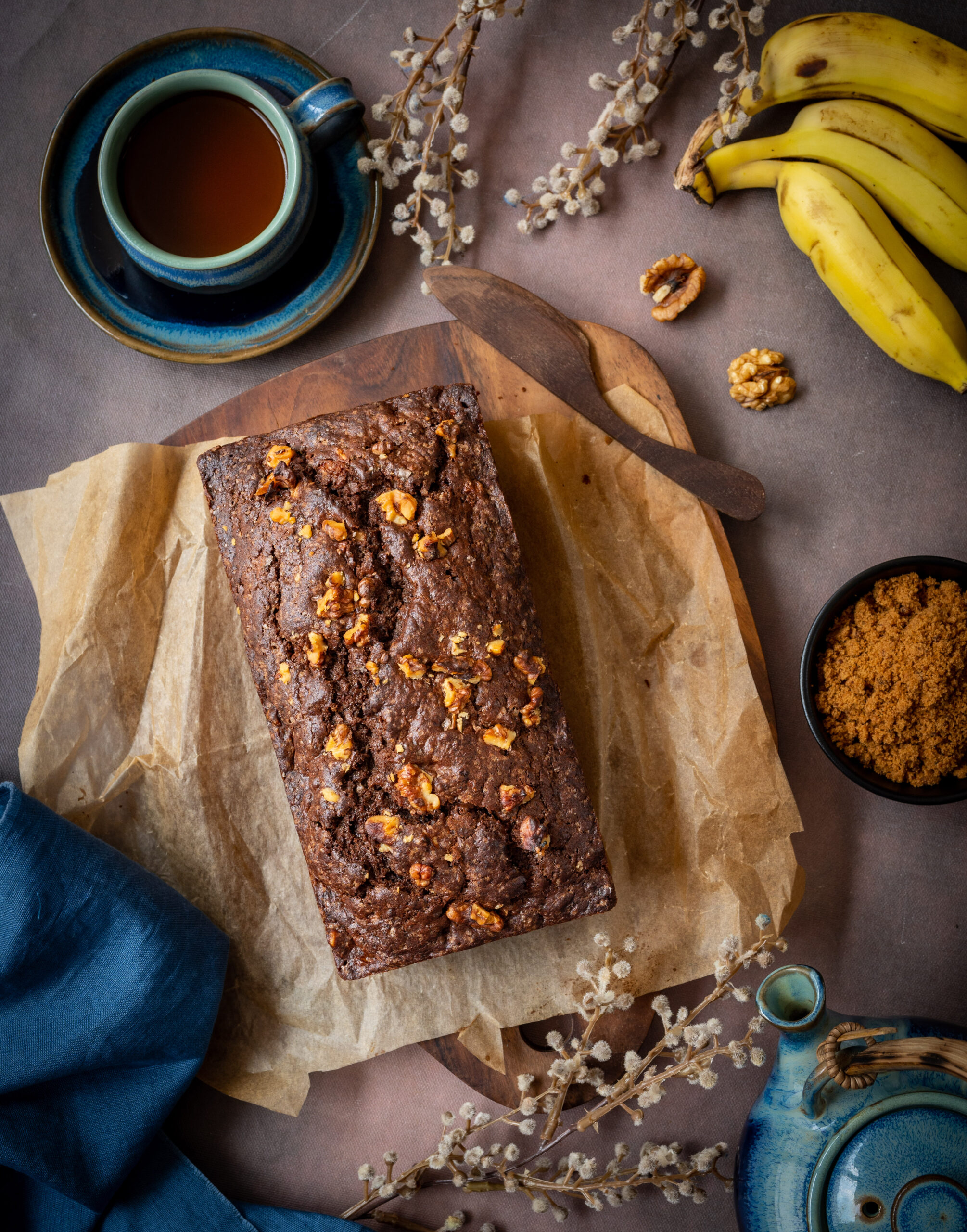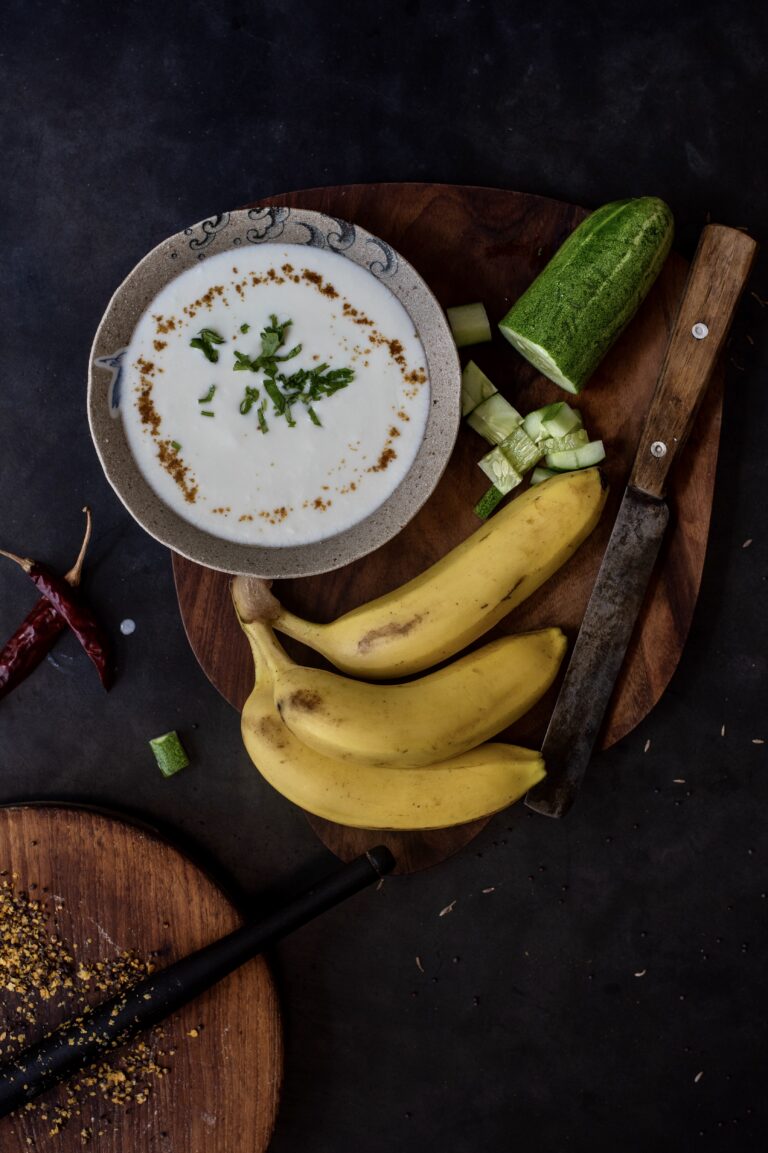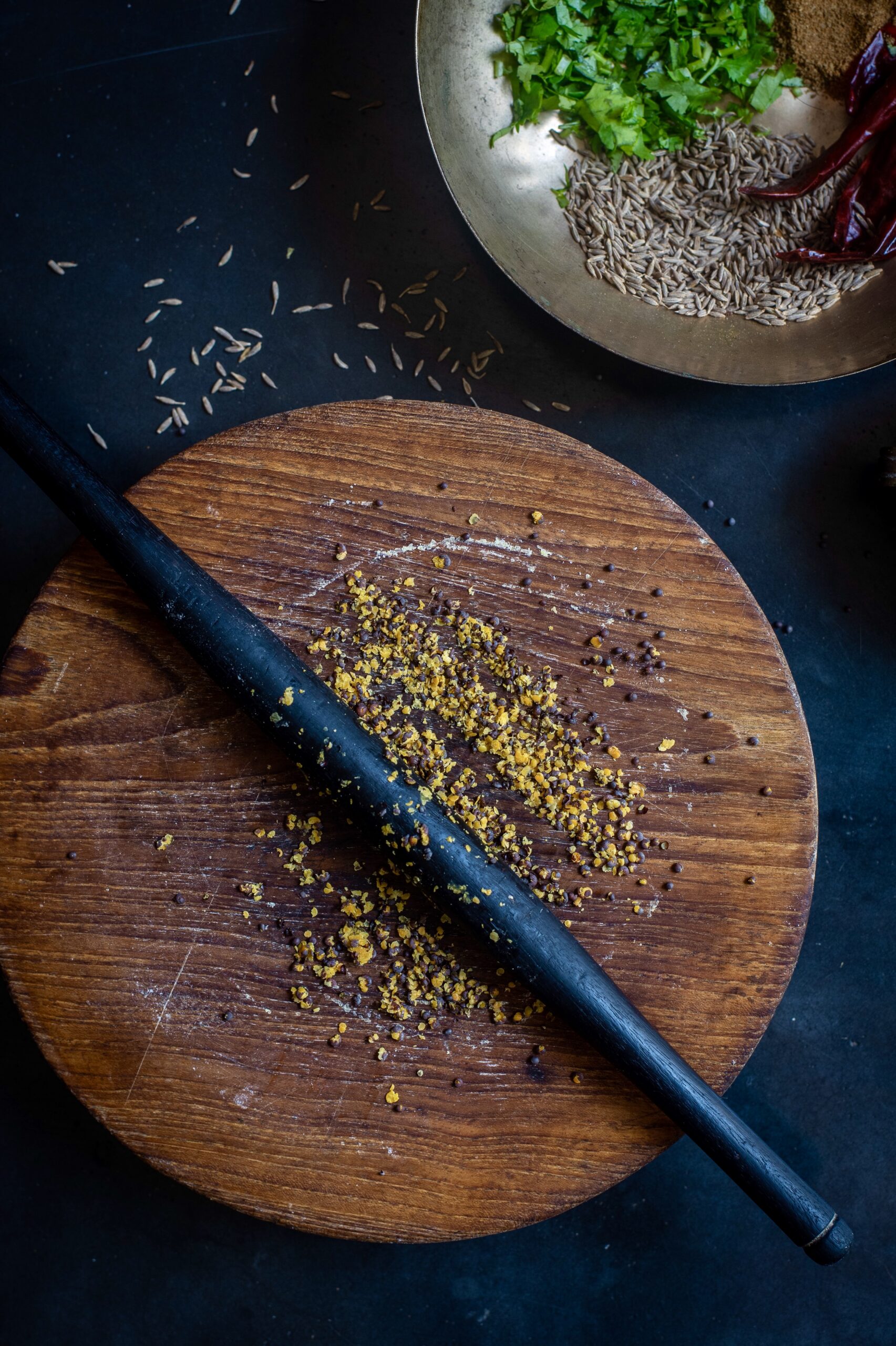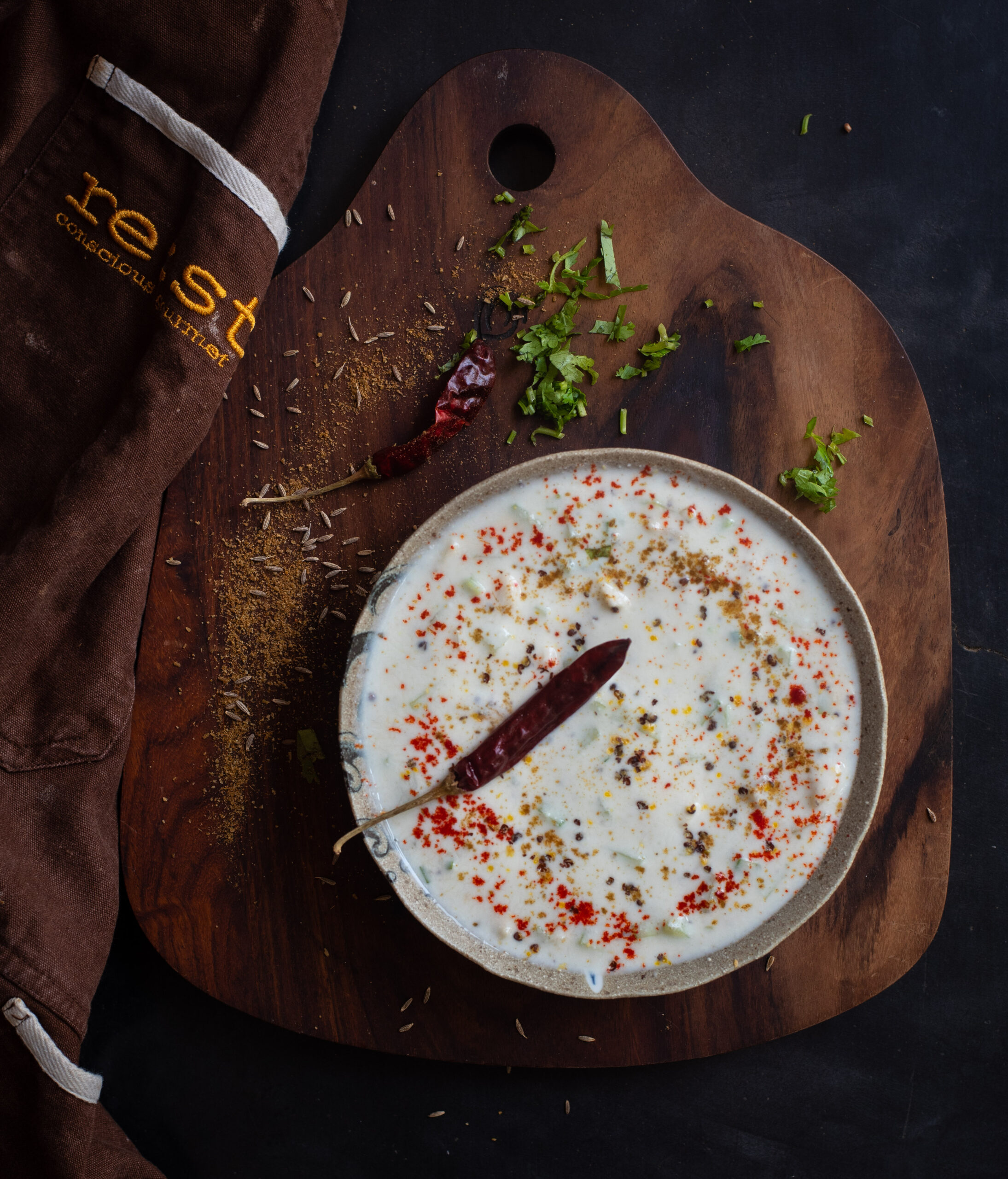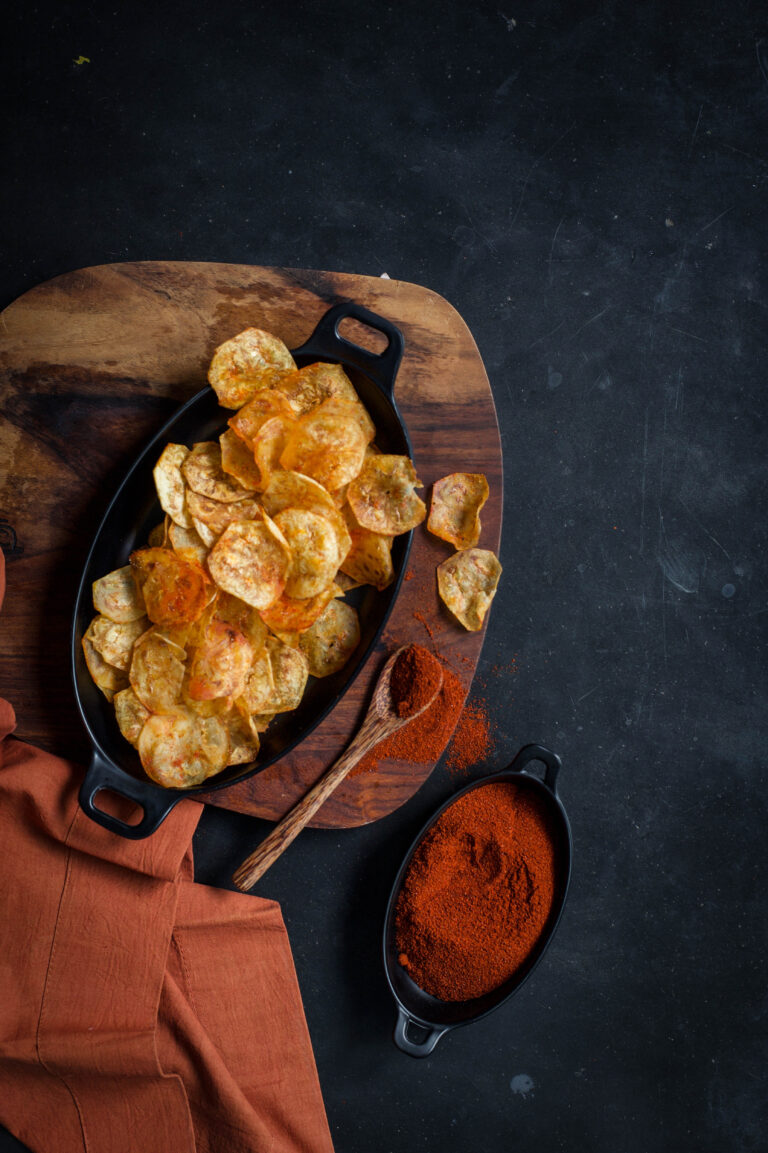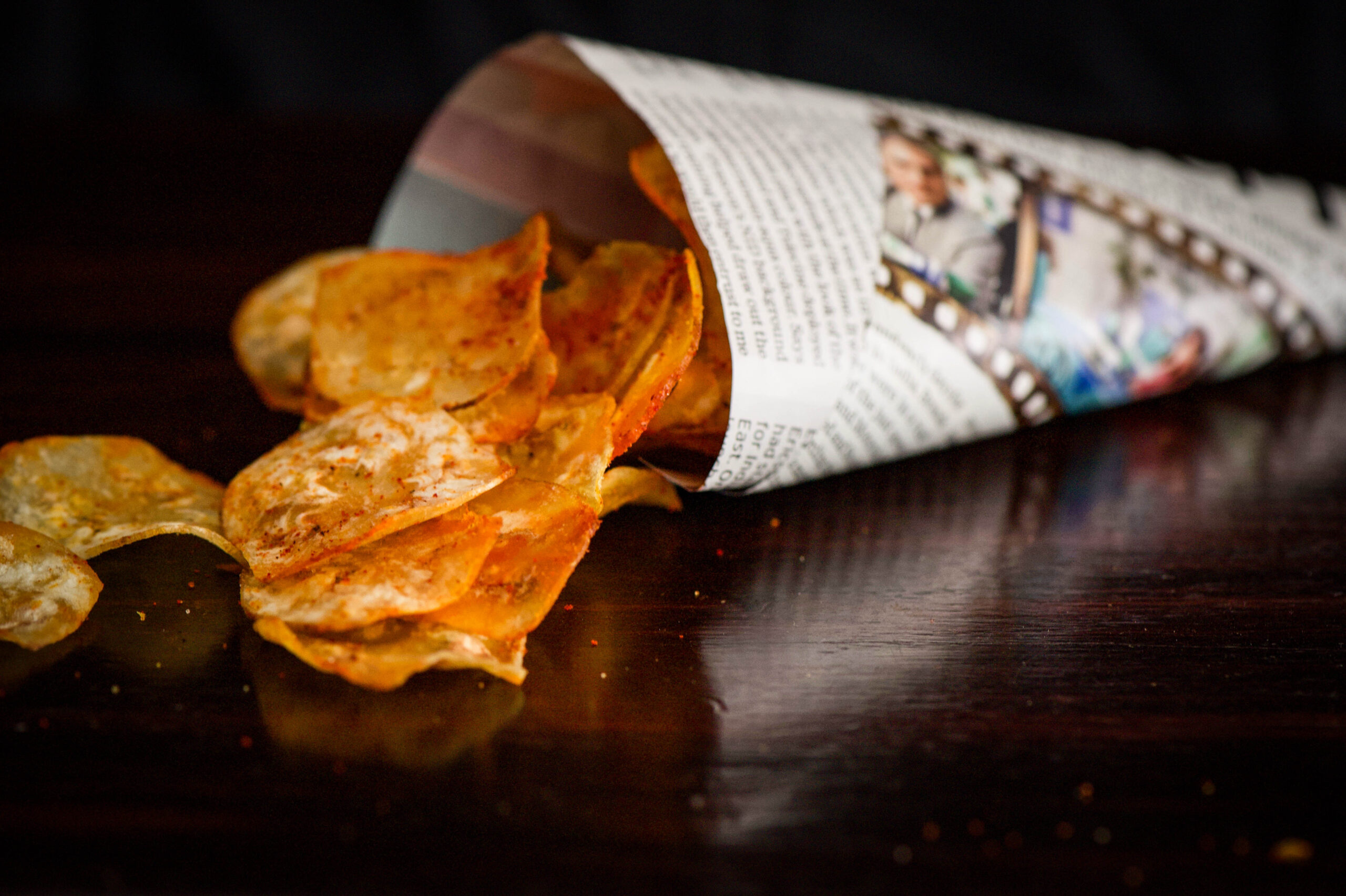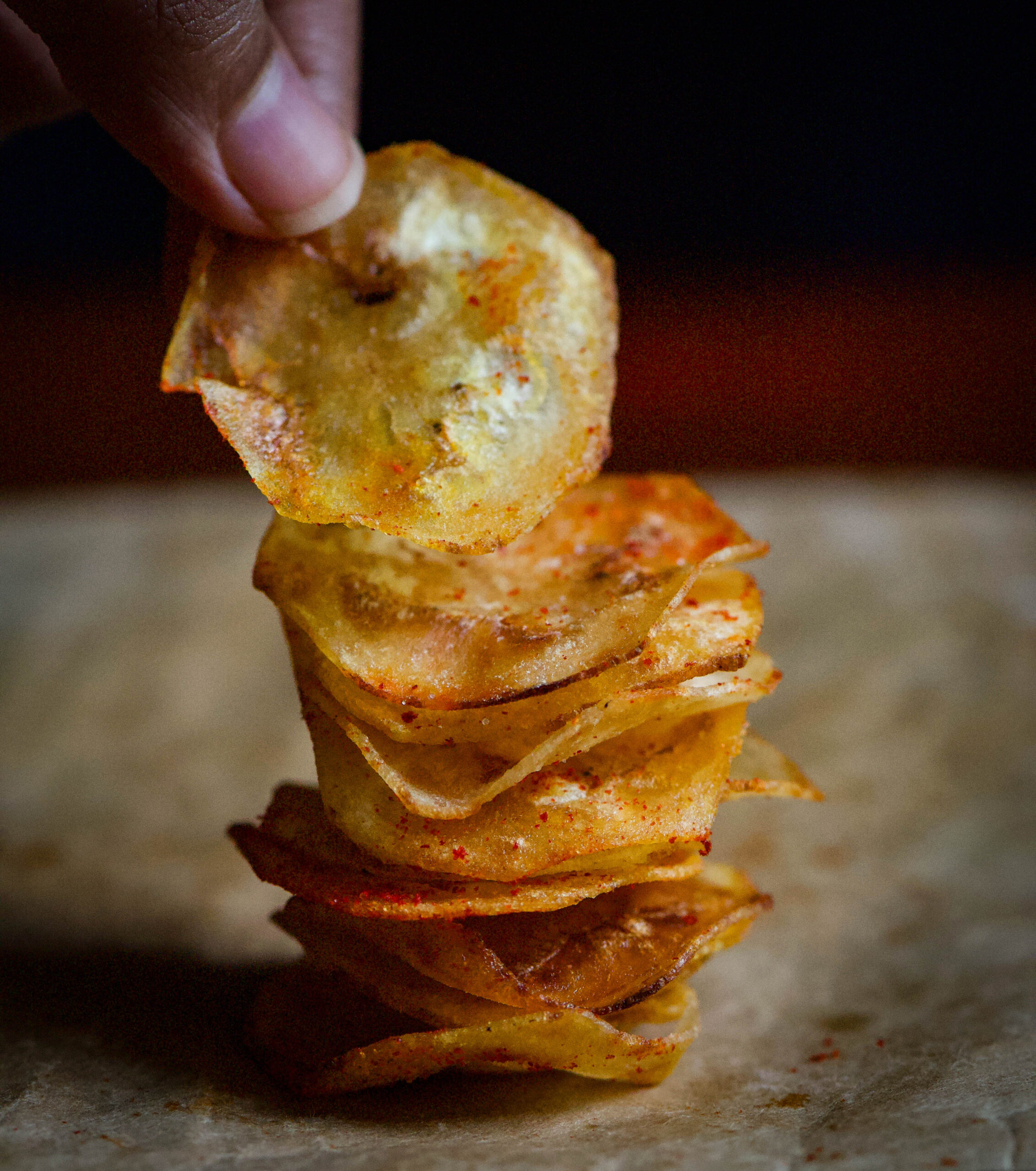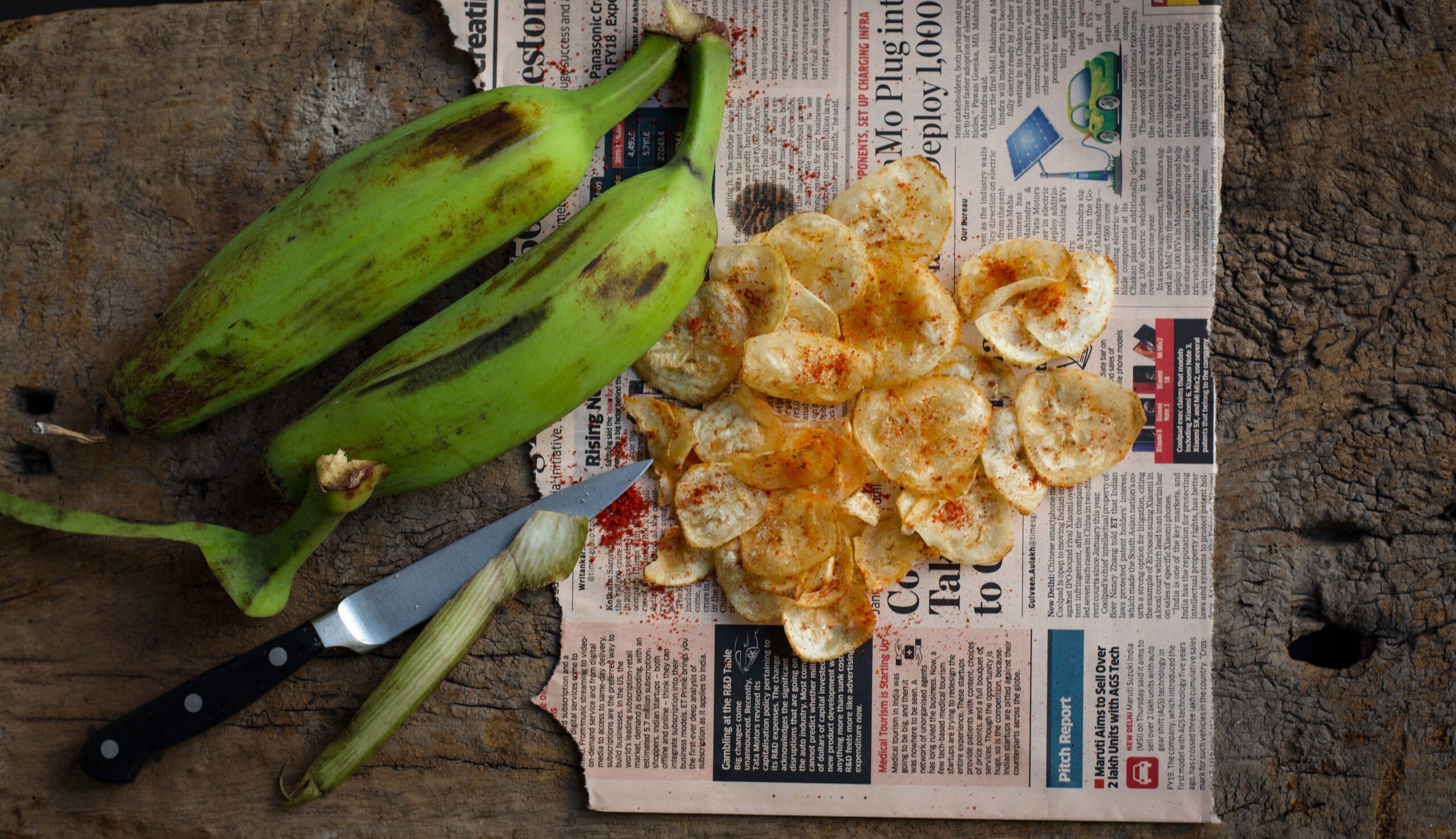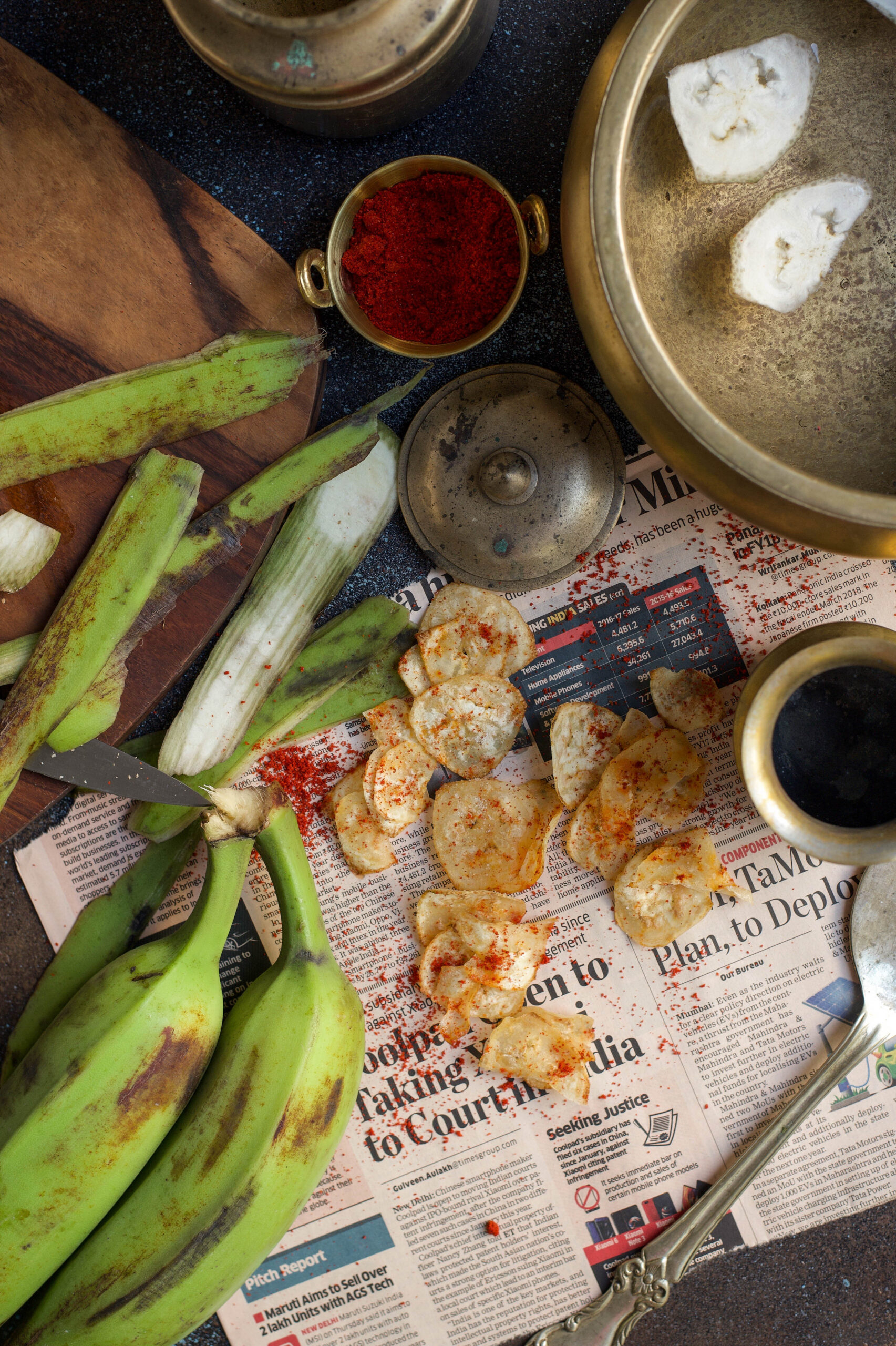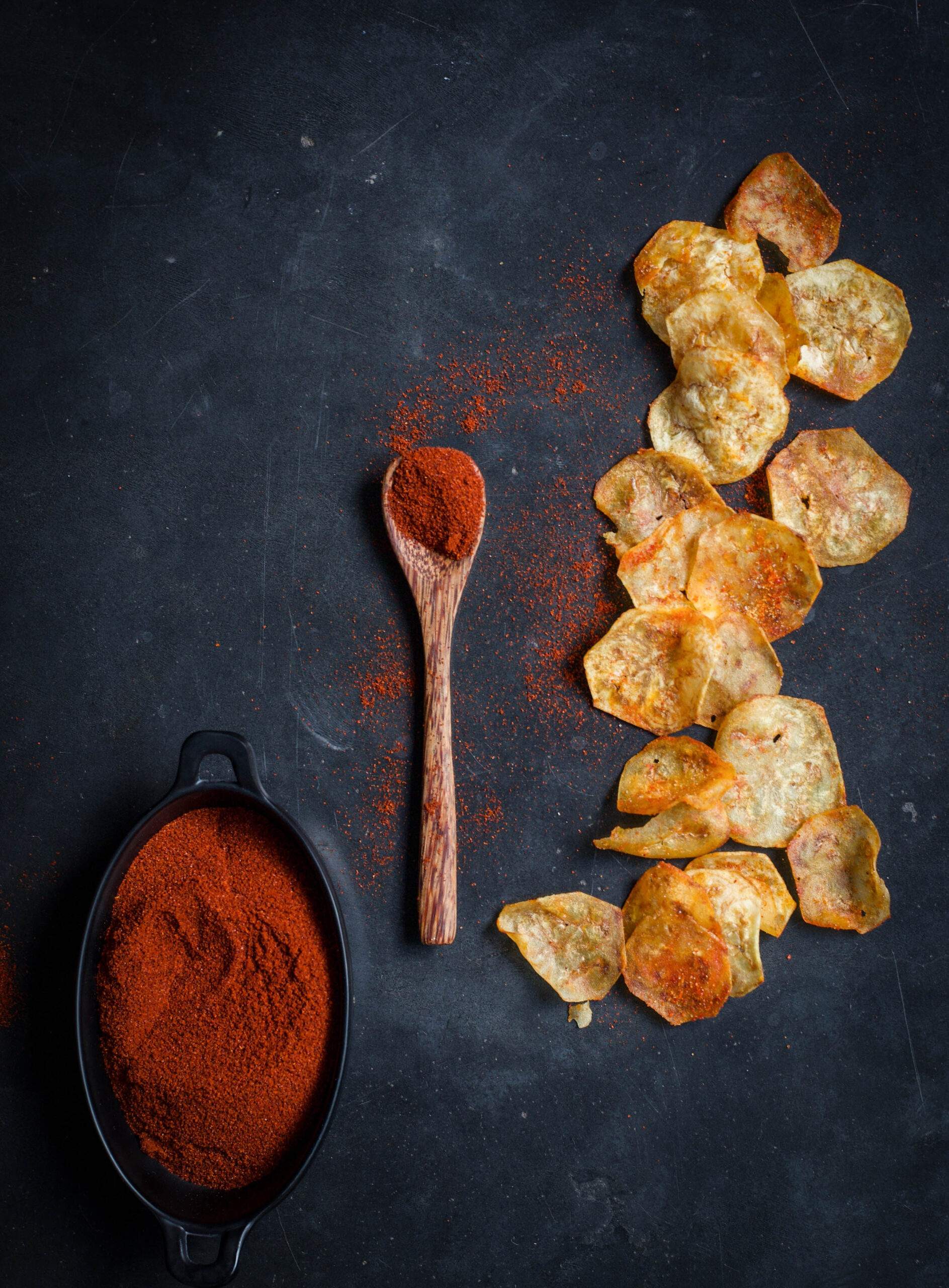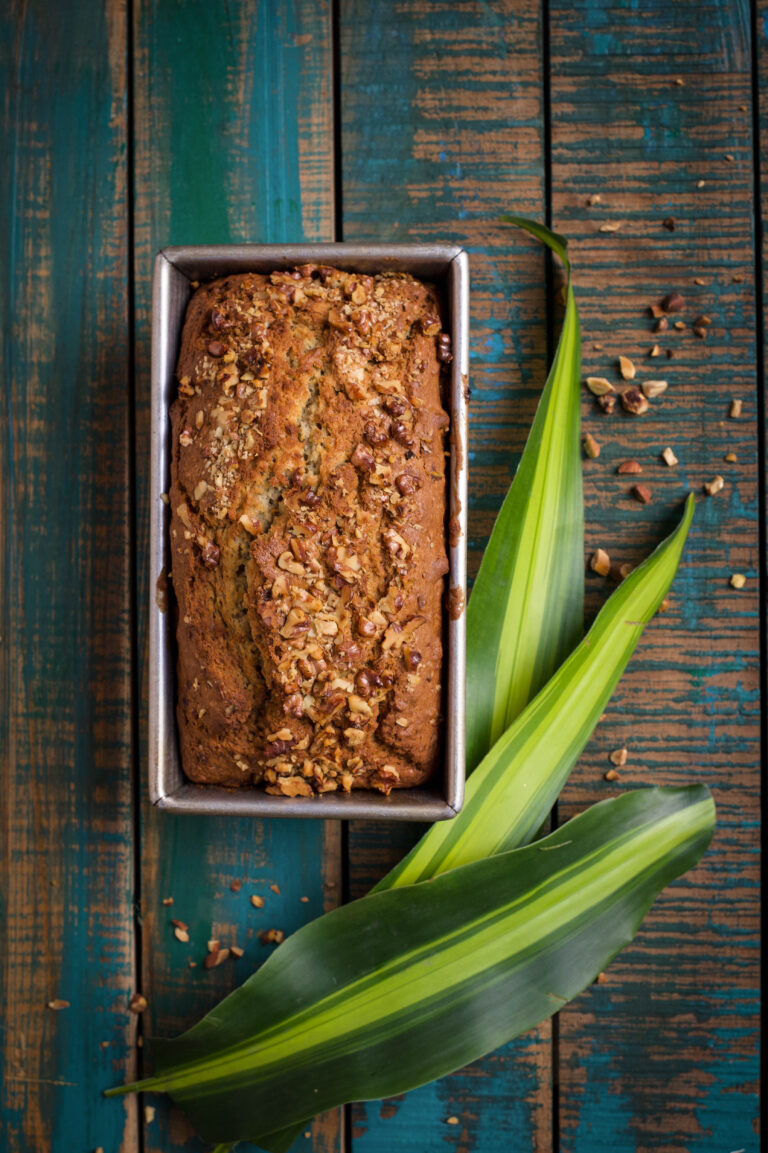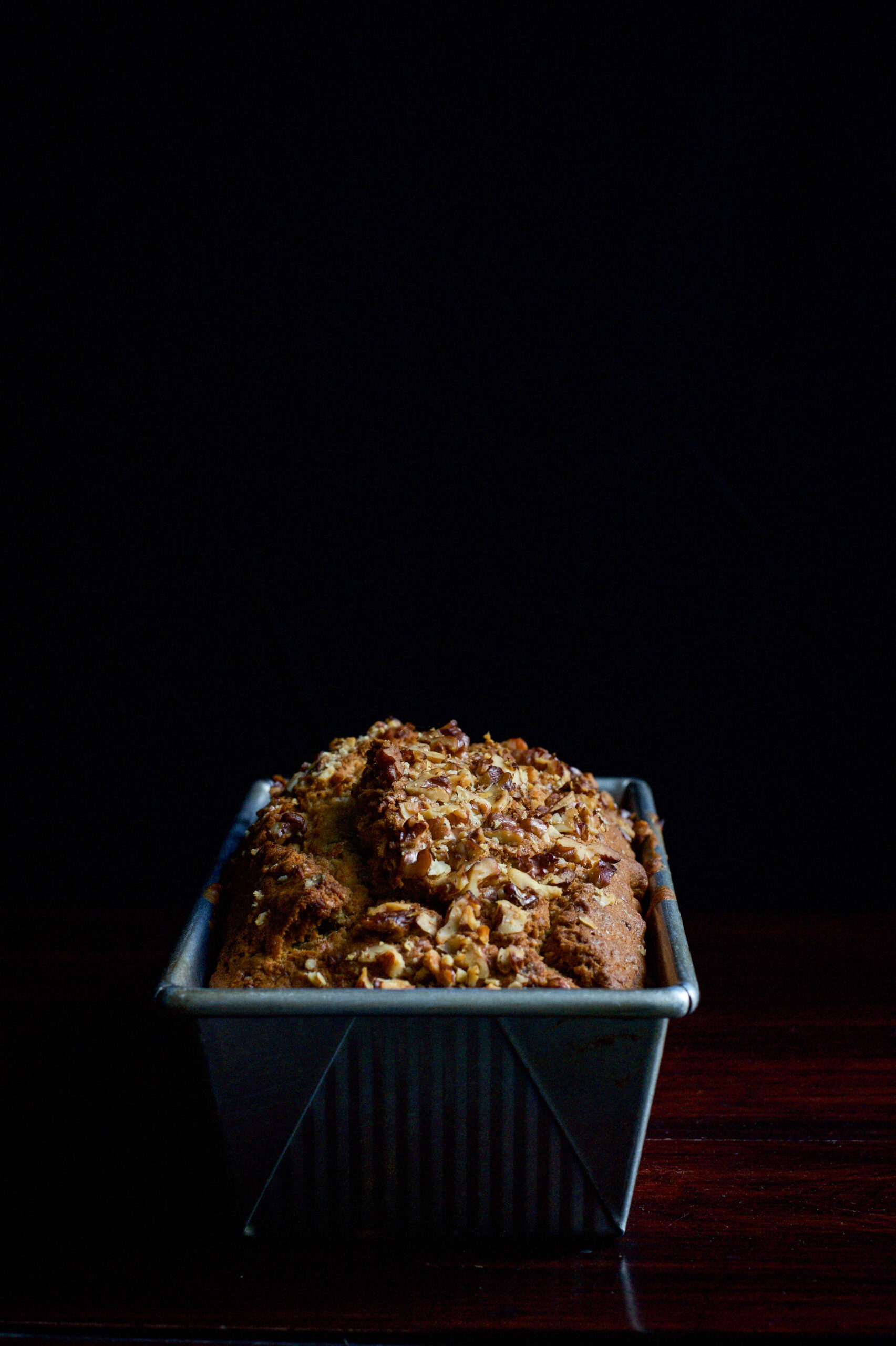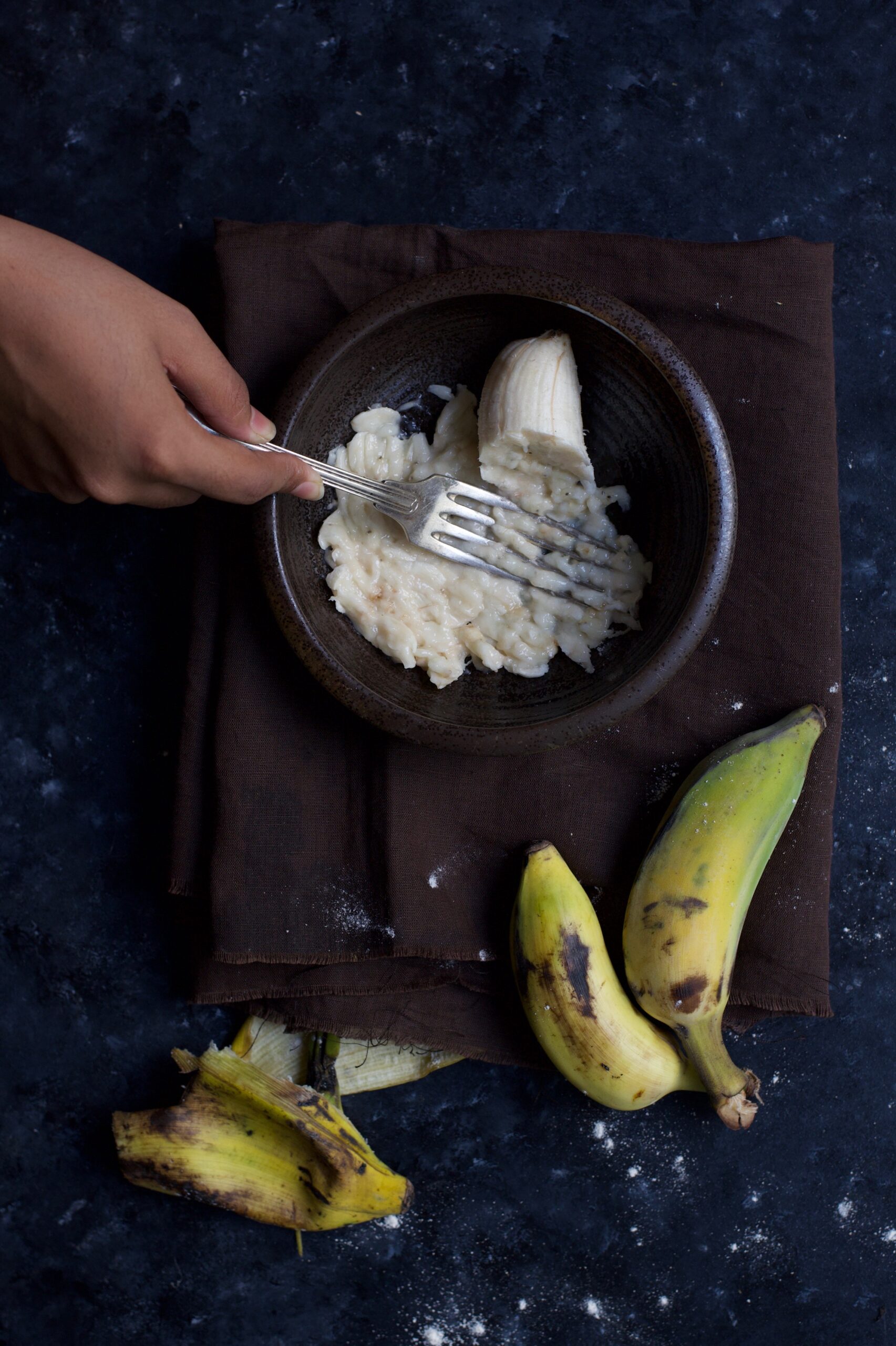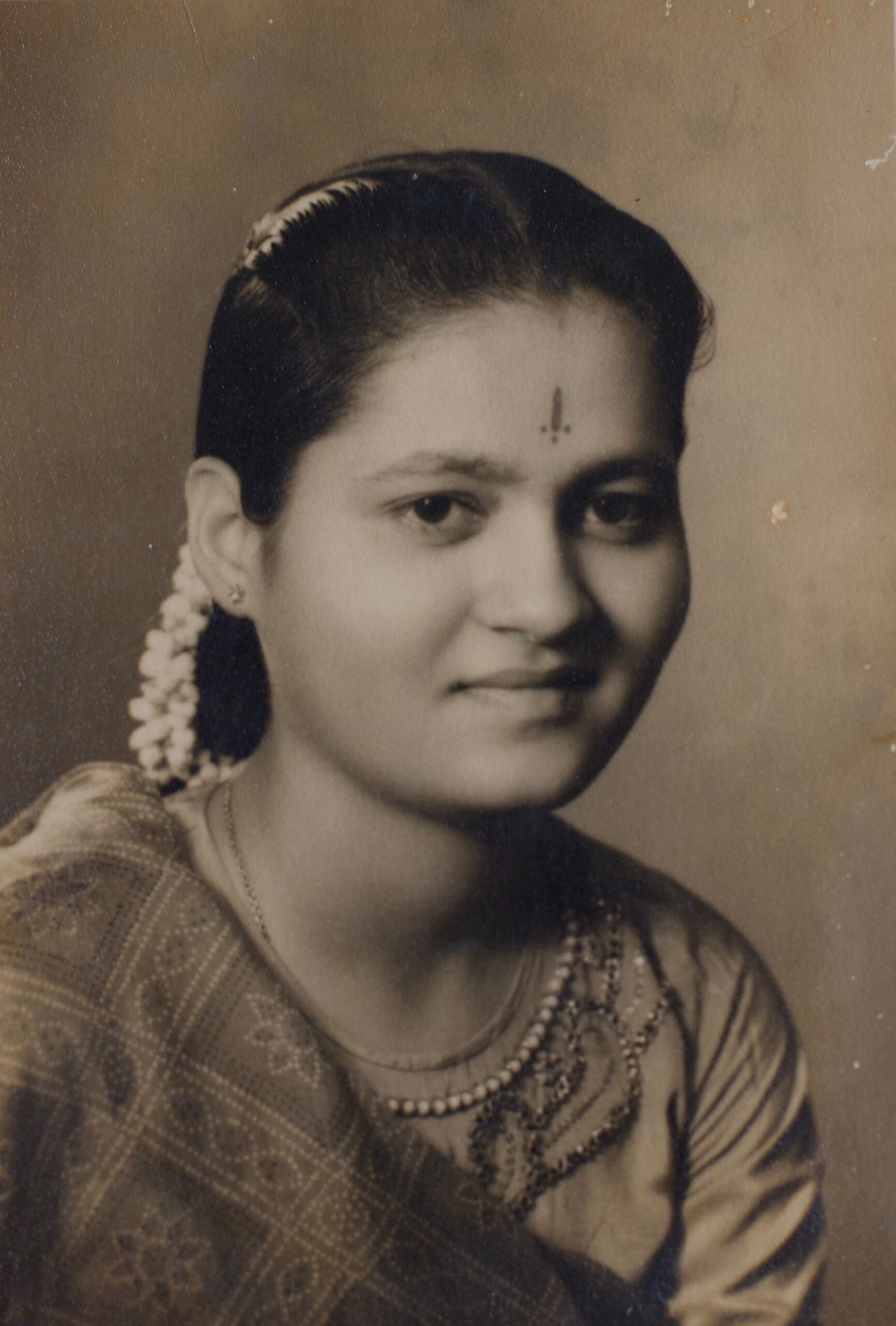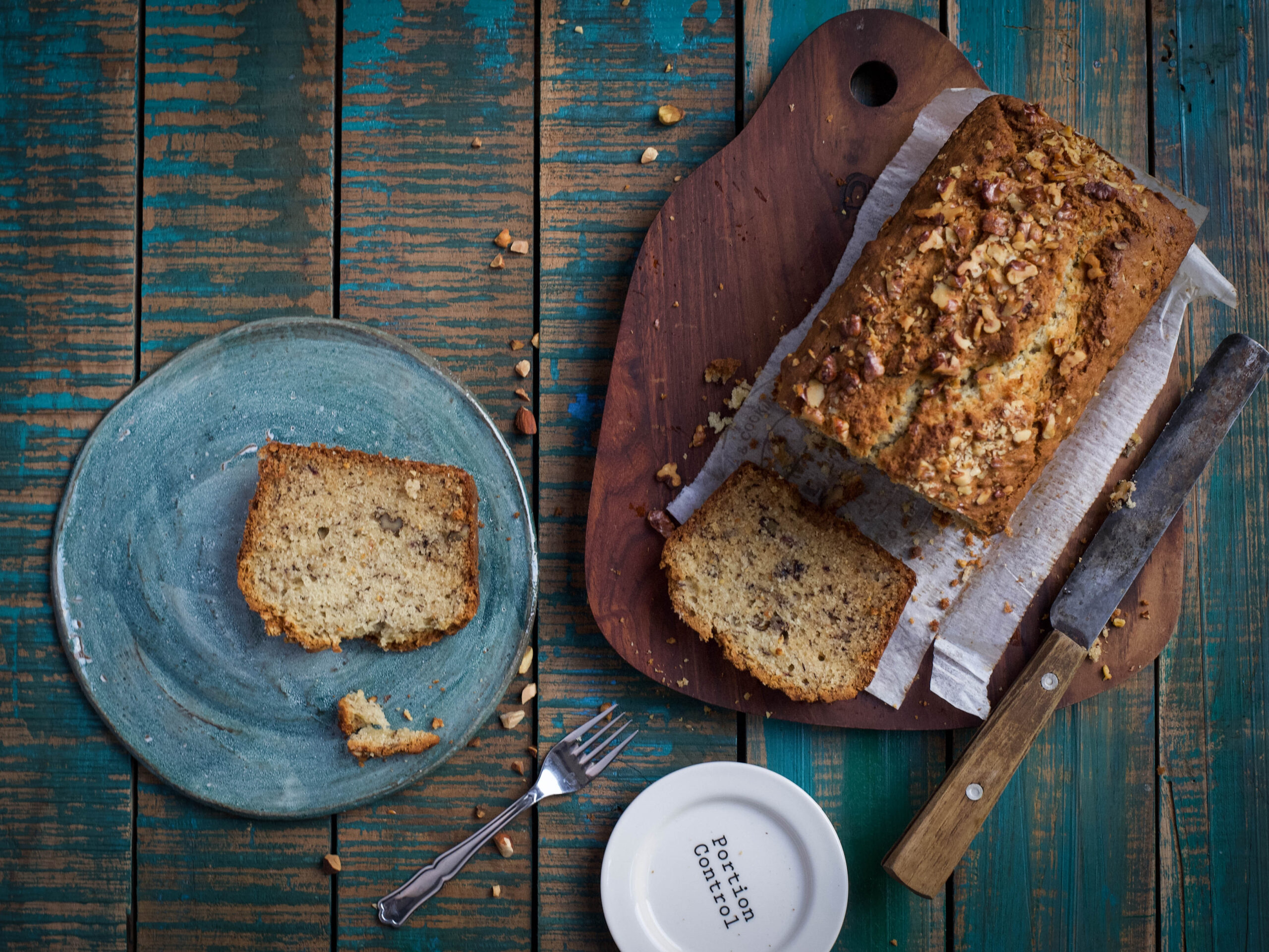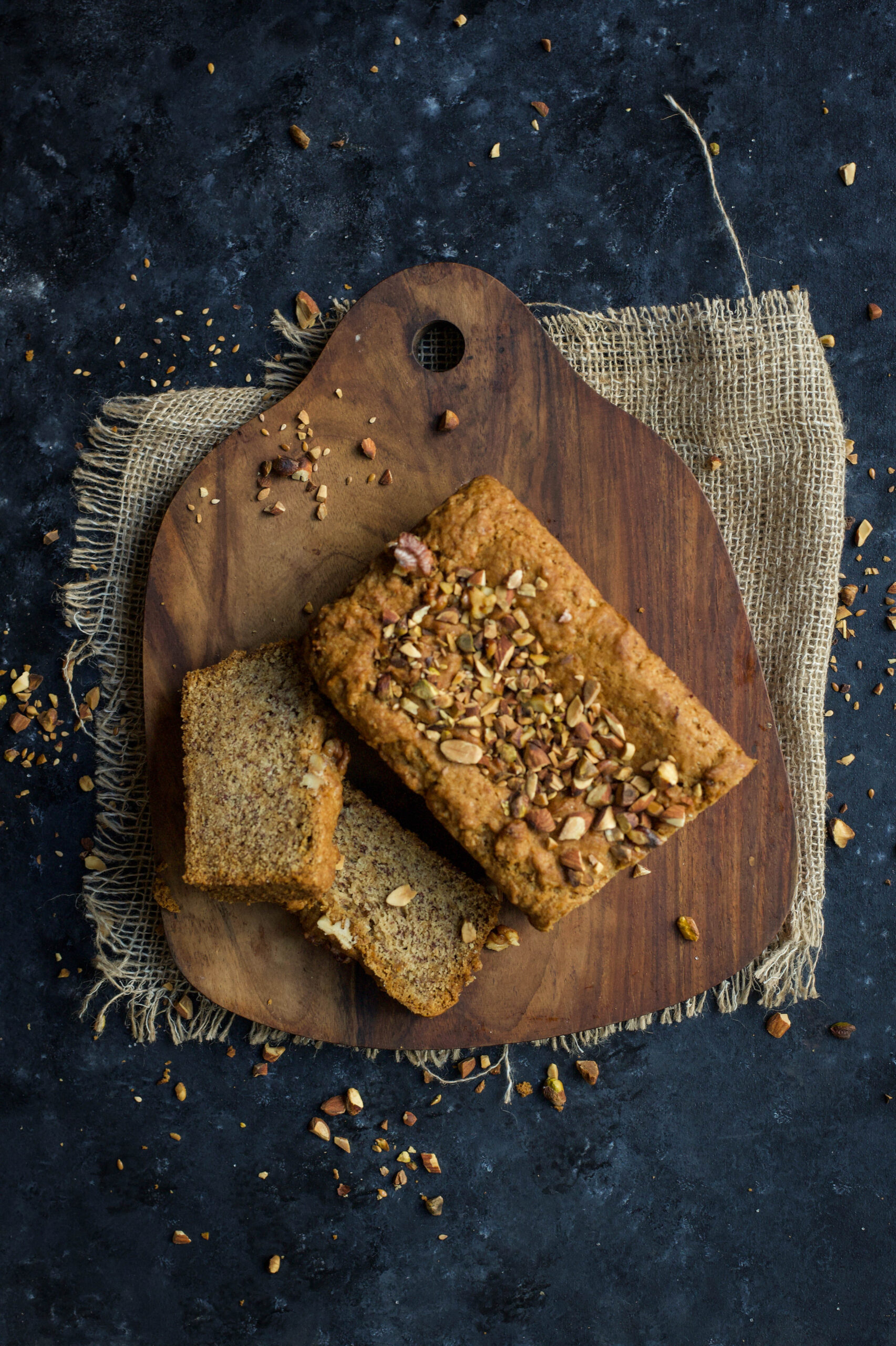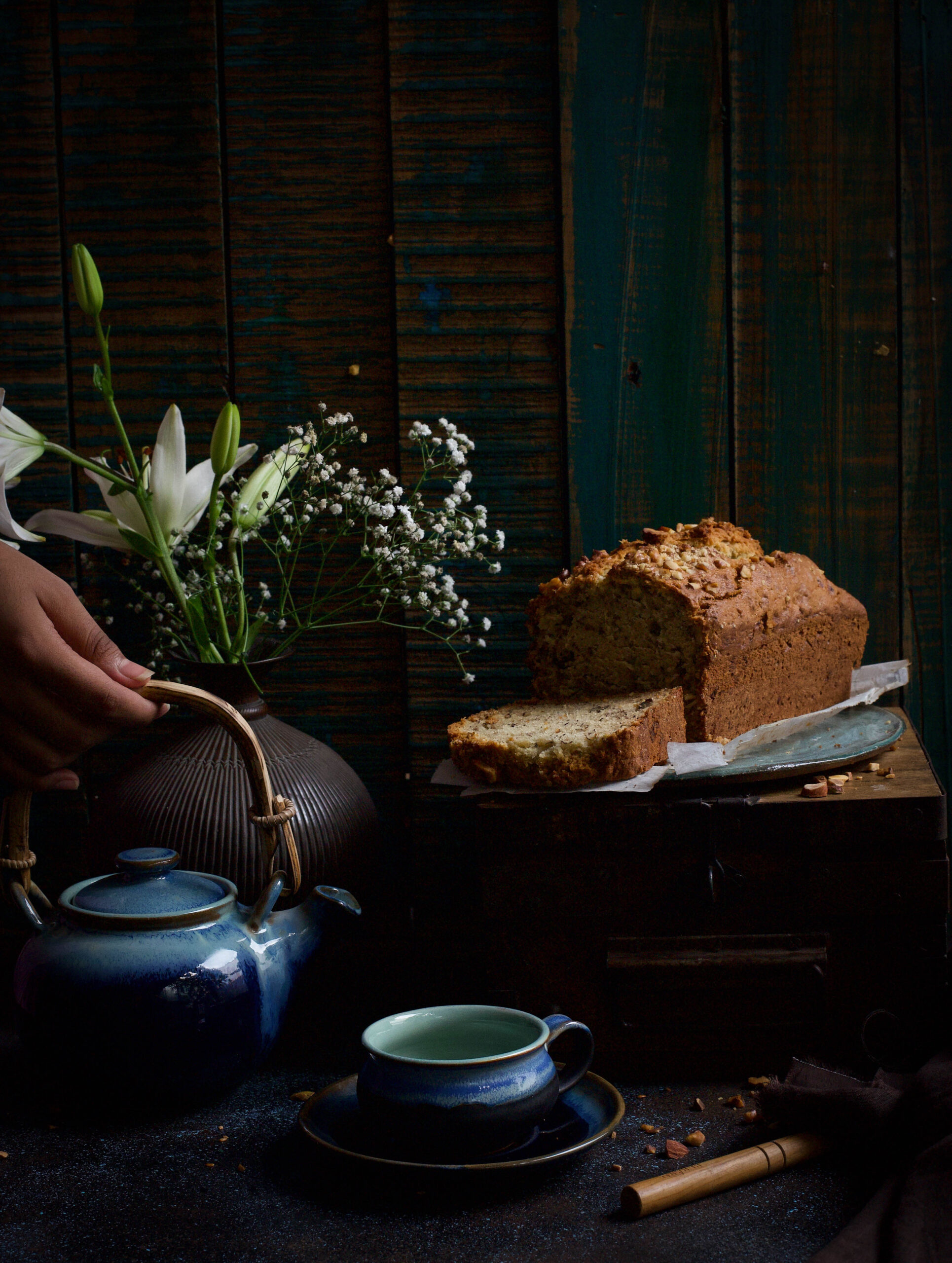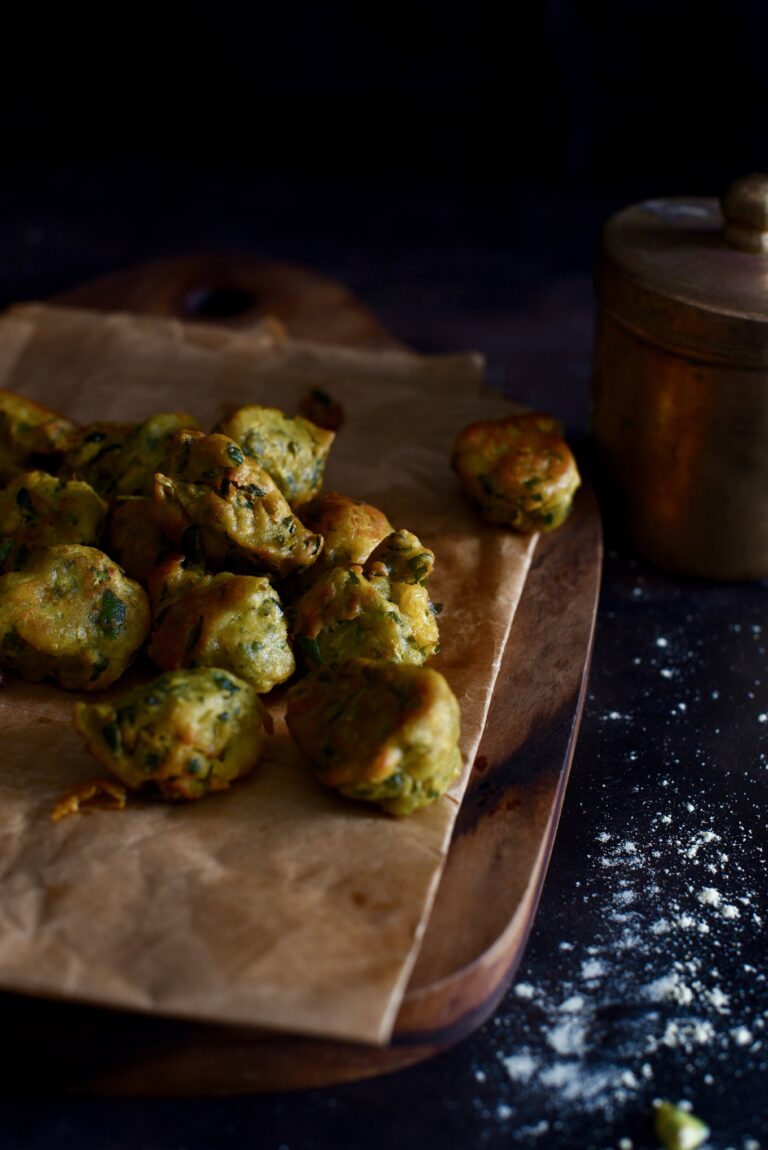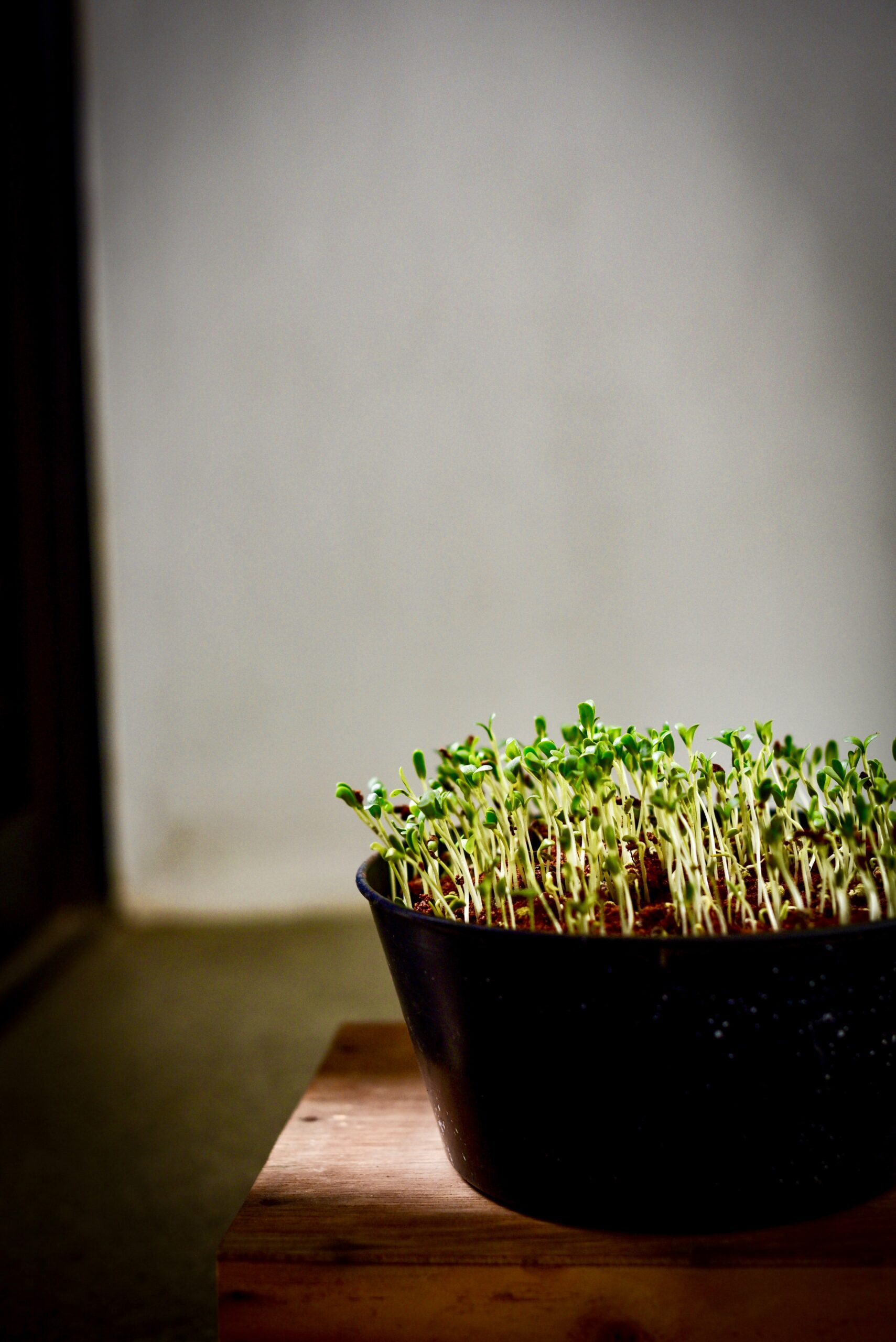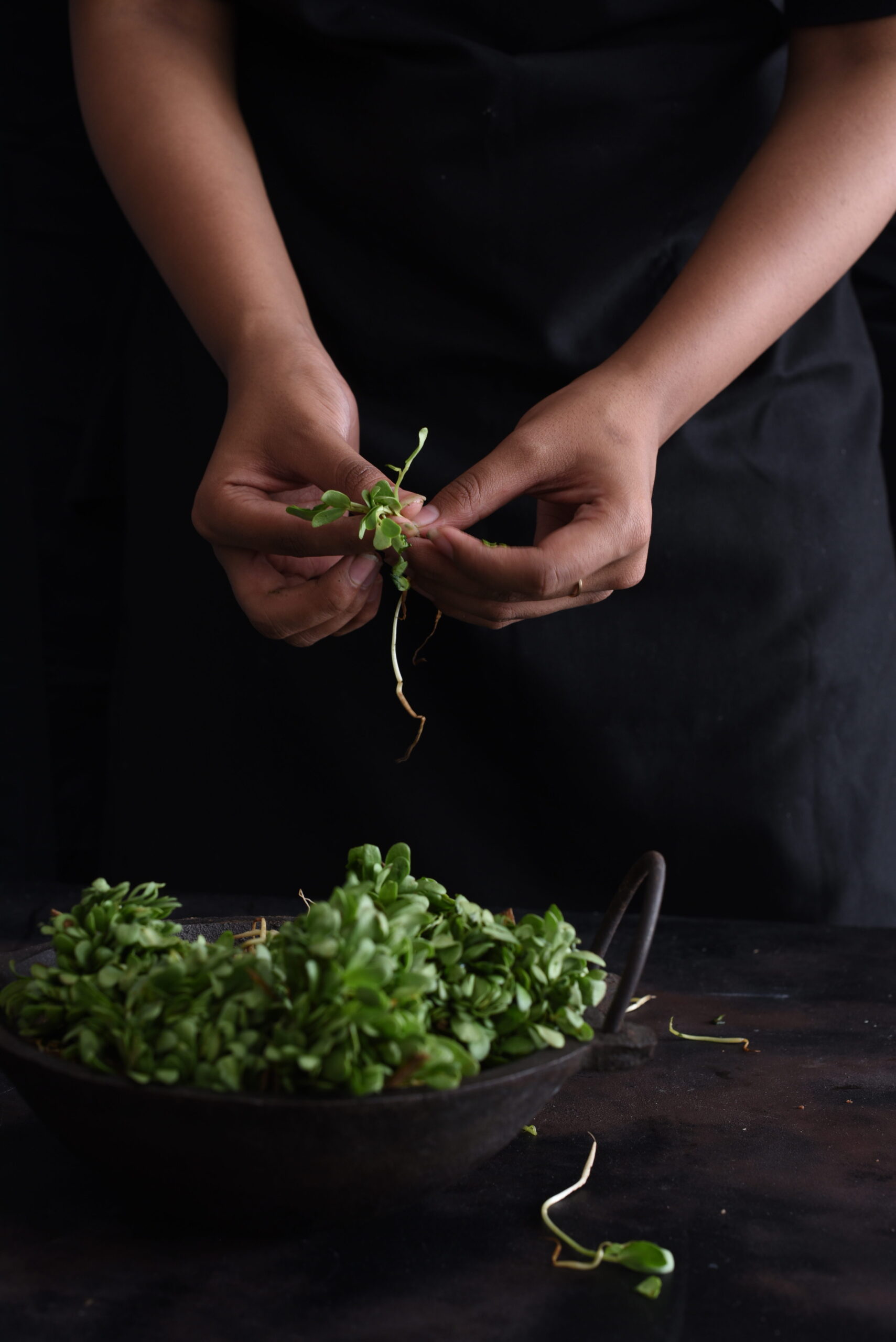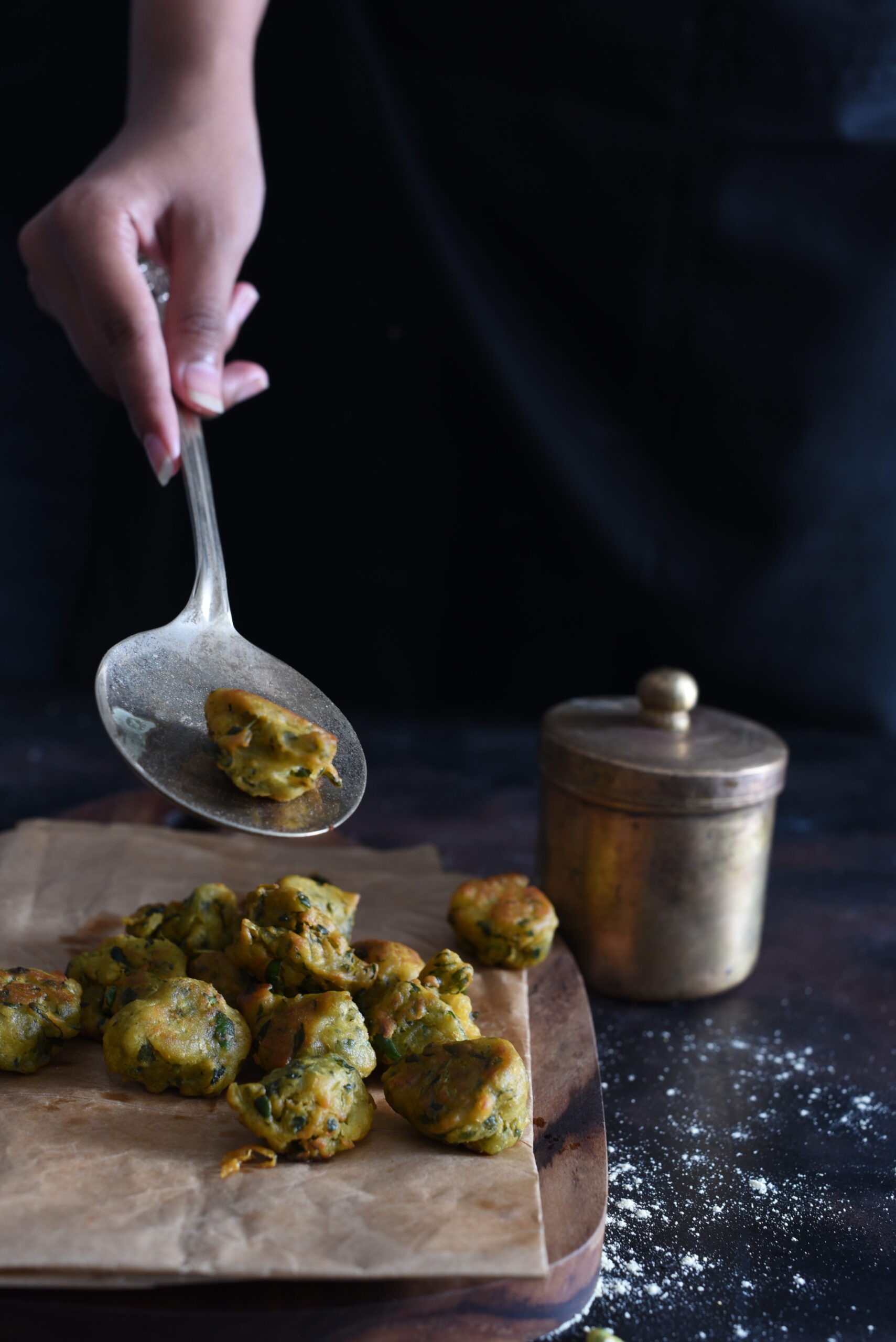The festive season is about to begin here in India, and sweets galore are going to be produced, shared and consumed across the length and breadth of the country. It will be almost impossible to avoid consuming significant amounts of sugar at this time, but aside from moderation, we can also tweak the dessert offerings in our own homes and serve sweet but balanced treats. This will add a touch of novelty too. These caramelized bananas are a perfect addition to a more thoughtful celebratory menu.
Bananas provide not only a great sugar rush, but they are high in potassium and kept on hand by many gym-goers as they replenish electrolytes. Living in a country that produces over a quarter of the world’s bananas, and especially in a region where the plant is prevalent everywhere, my exposure to the fruit and the plant are certainly high. The plant itself is one of my favourites, and is beautiful to look at. I frequently use the stems and flowers in dishes, such as this banana stem buttermilk. I do bake the fruit into a loaf now and then, or cook it in a kela nu shaak but to tell you the truth, I am personally not a great fan of it. The fact that I thoroughly enjoy these caramelized bananas is therefore a testament to their tastiness.
The first time I had them was on a surprise holiday with my husband. We went on a really long trek wherein we got lost. Two hours later, we found the little spot that we were supposed to reach, and here, the organizers of the journey prepared a freshly-made picnic for us. It is difficult to carry a lot of items on a tedious hike, so the meal contained simple ingredients. Bananas, being such a portable fruit and good for after a workout like an outdoor trek, were a practical part of the menu, in the form of this dessert.
Despite everything I said earlier in praise of the fruit’s nutritional qualities, my longstanding dislike usually trumps my desire to consume it. Still, a few bites of this dish during that picnic were all it took to charm me. You can imagine my surprise when I found myself carefully observing as more caramelized bananas were being prepared, mentally noting how to make them myself later! They were made in a jiffy, too. I knew right then that I’d found a lovely dessert that would be easy and quick to make, and possibly healthier than most traditional treats.
I believe what made me like them so much was the use of cinnamon and other spices, which flavoured my far-from-favourite fruit in a lovely way. Who knew that a fruit we take for granted and a few ingredients common to an Indian kitchen could result is something so delightful?
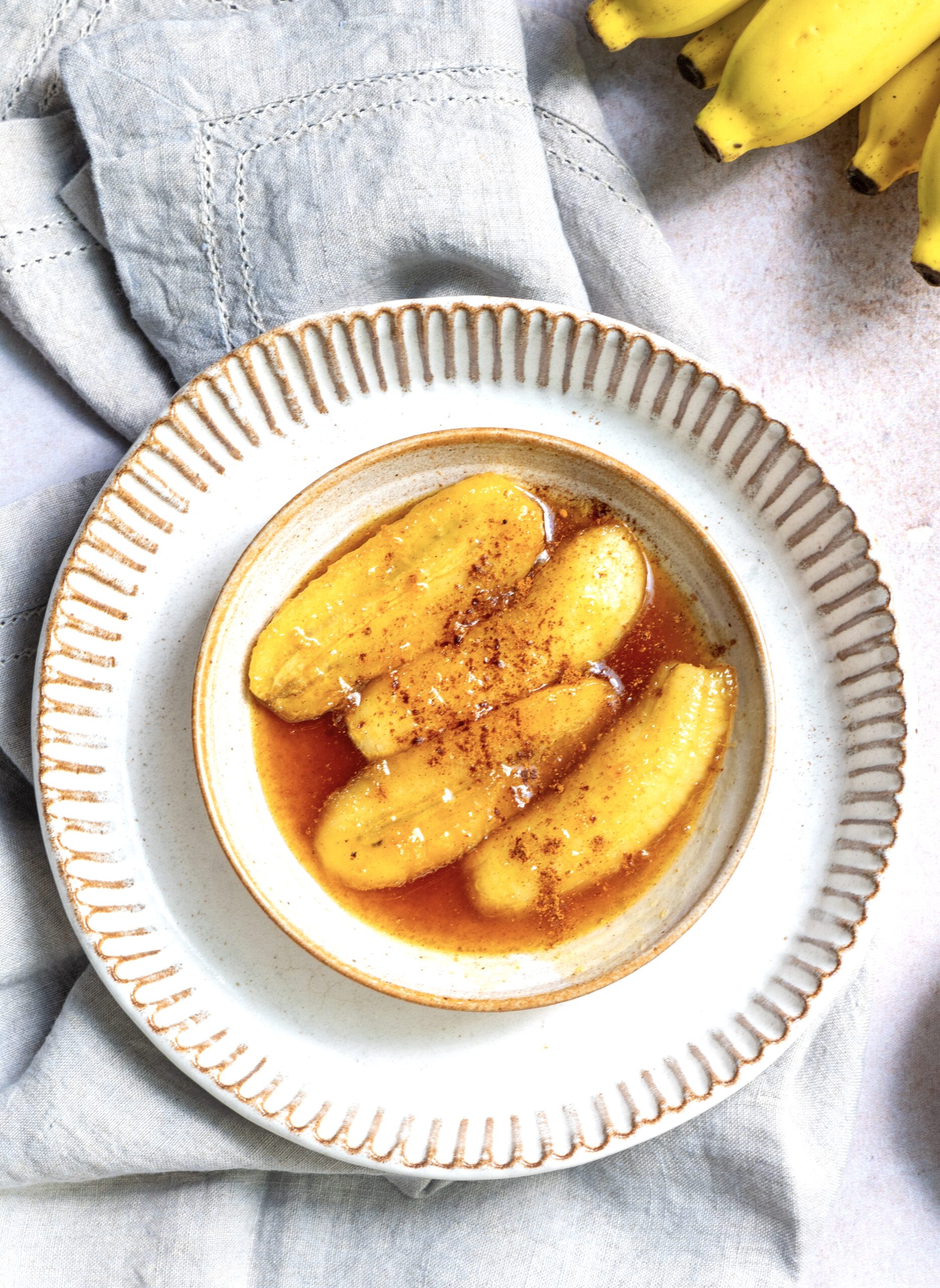
Caramelized Bananas
(Serves 2)
1 tablespoon butter
2 small bananas (cut lengthwise)
¼ cup sugar (use less if you prefer)
3 tablespoons water
½ teaspoon cinnamon
1 teaspoon grated ginger
A pinch of salt
Heat a flat pan. Add sugar and allow it to melt. Once it has melted, add water and stir continuously so it all comes together. Now, add the ginger, cinnamon powder and salt and keep stirring.
While the sugar is melting, heat another pan and add the butter. Once it melts, place the sliced bananas on the pan and allow them to turn golden on both sides.
When the sugar syrup is ready, add it to the bananas. The mixture will splutter so be careful. Sauté for a minute on a medium to high flame. Turn off the flame and allow to cool a little.
Serve with fresh cream, or just on their own.
These caramelized bananas really changed the way I think of bananas for the better. They are such a simple dessert. I can attest that they satisfied someone who doesn’t even enjoy the fruit, which says a lot about how tasty they are!

